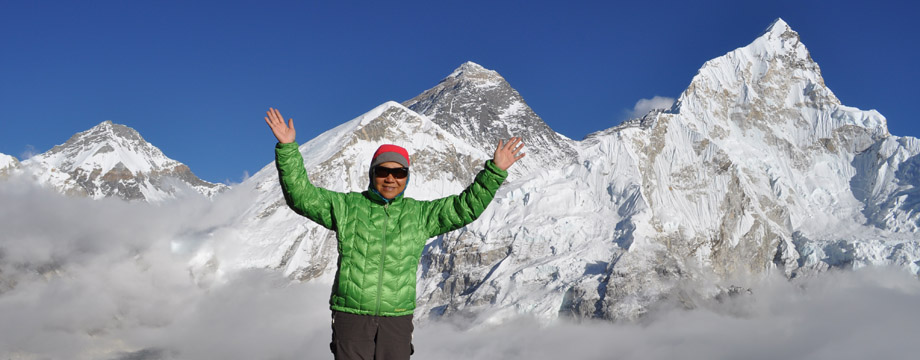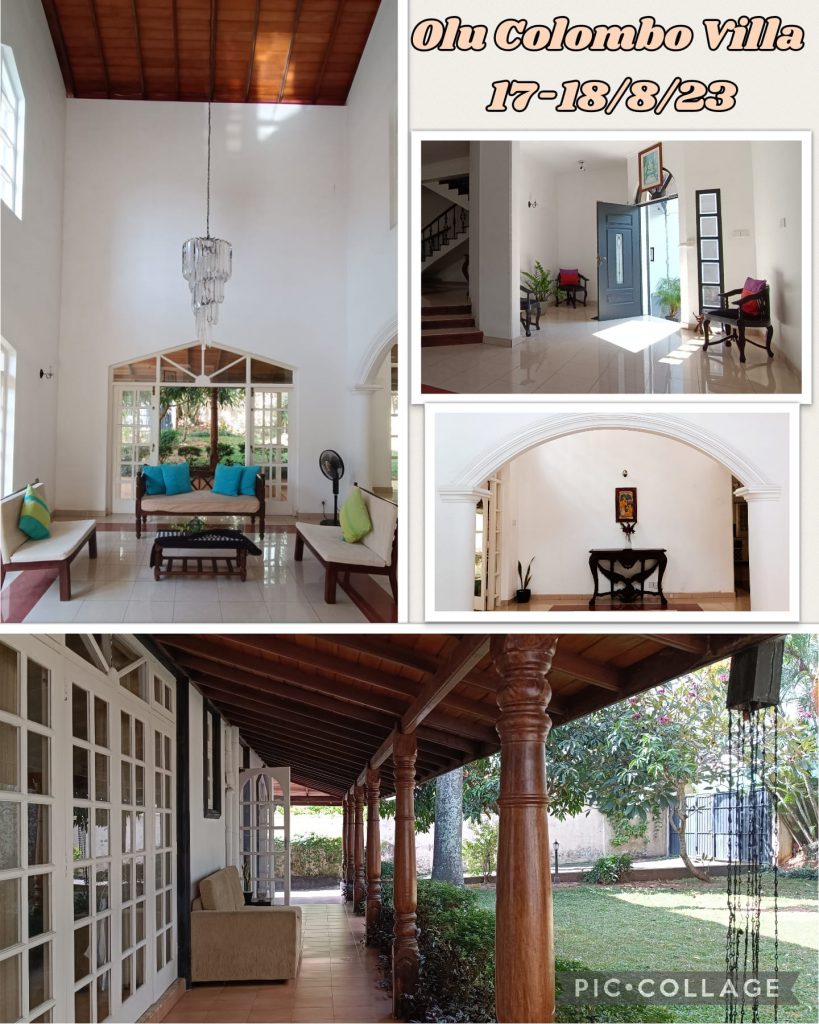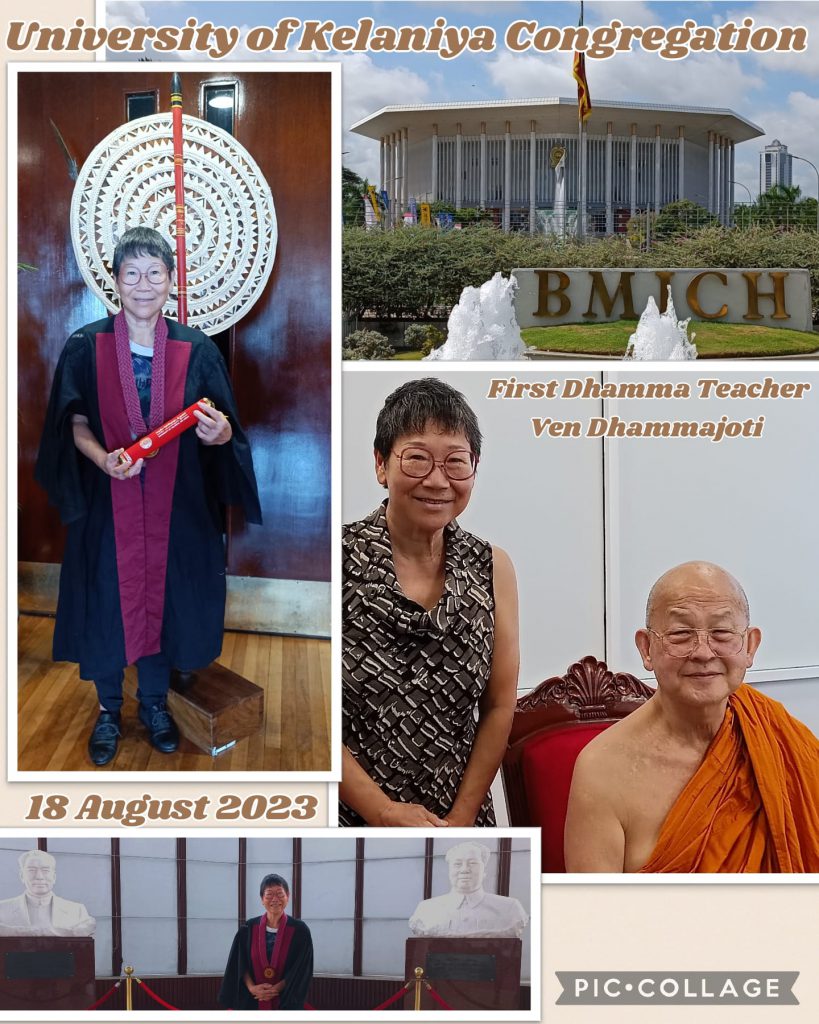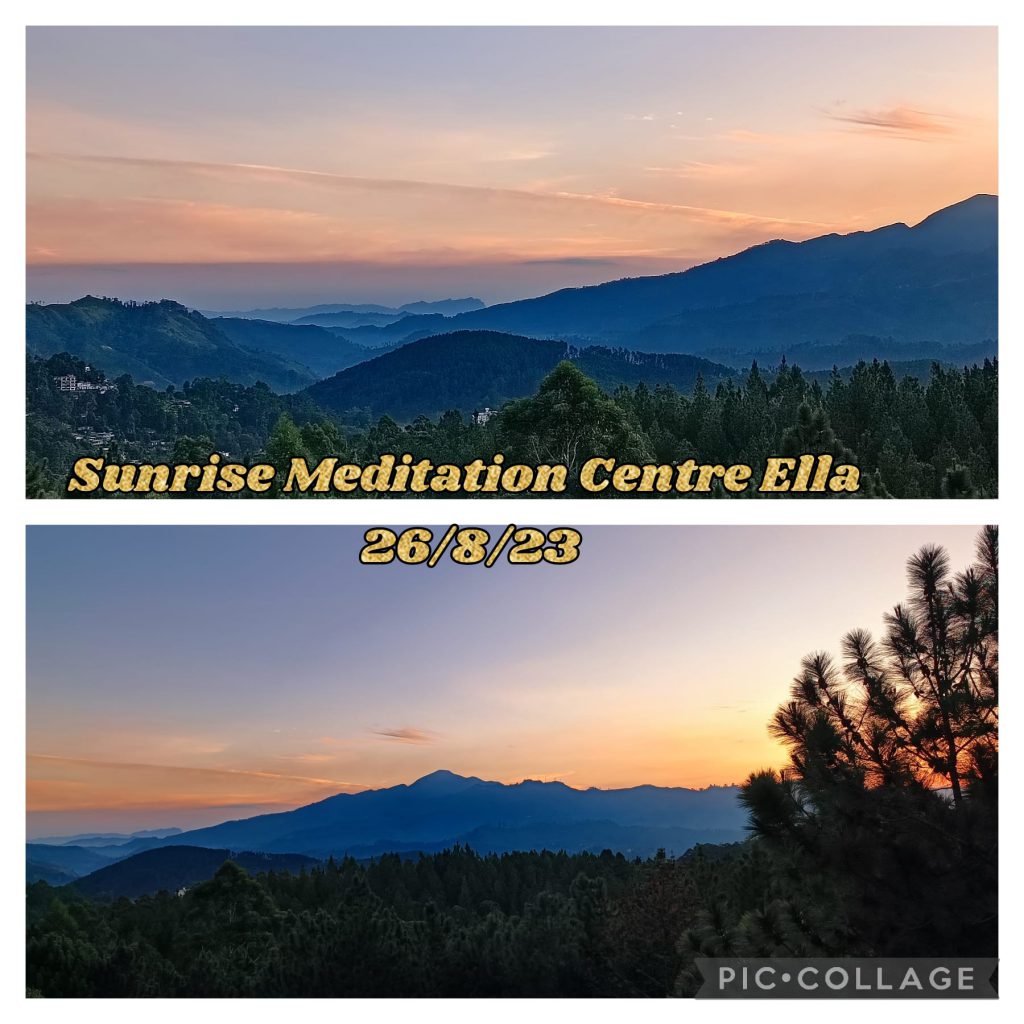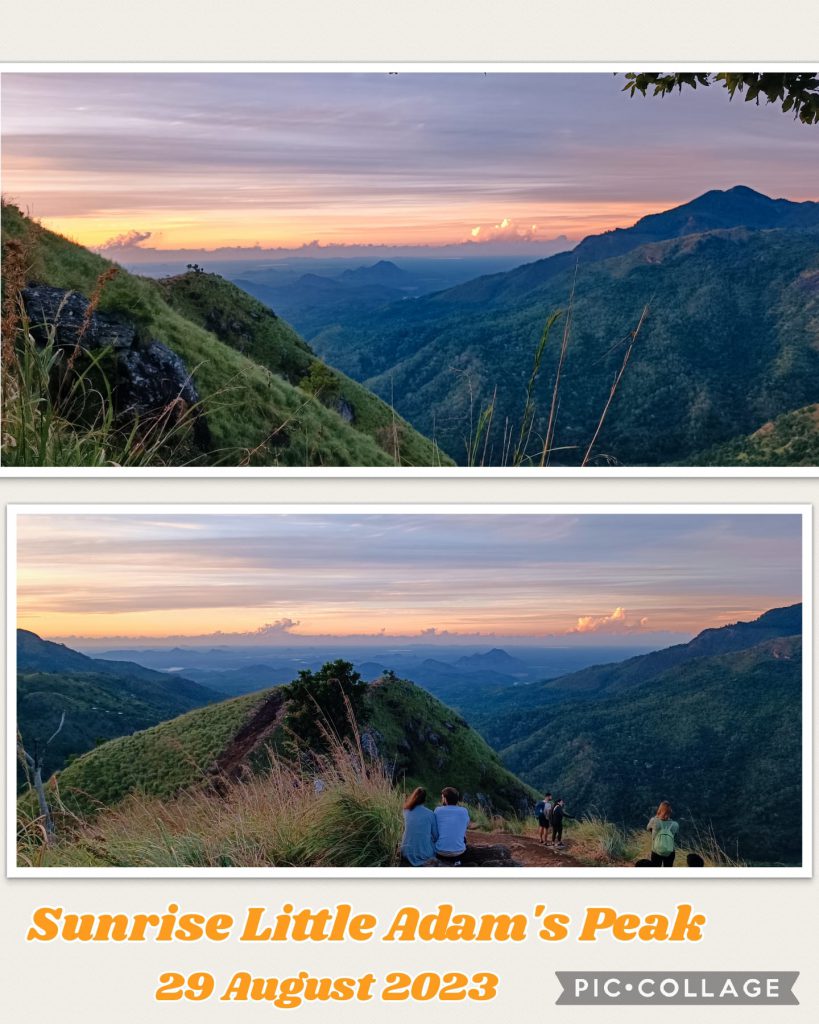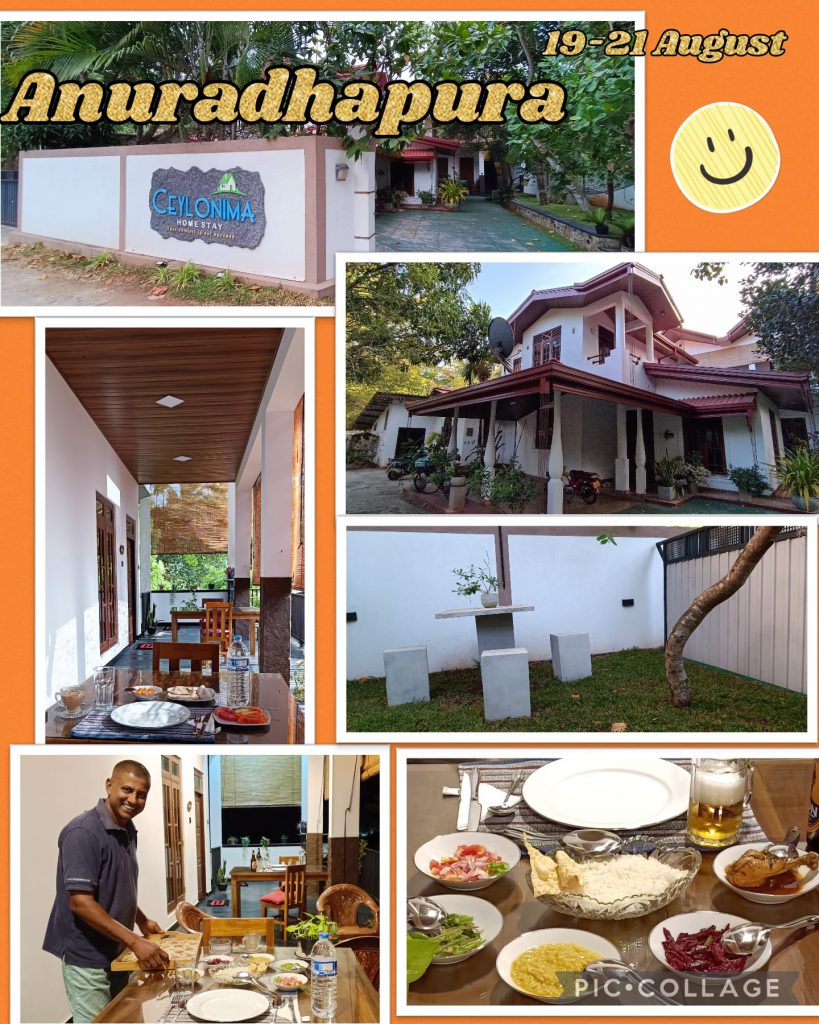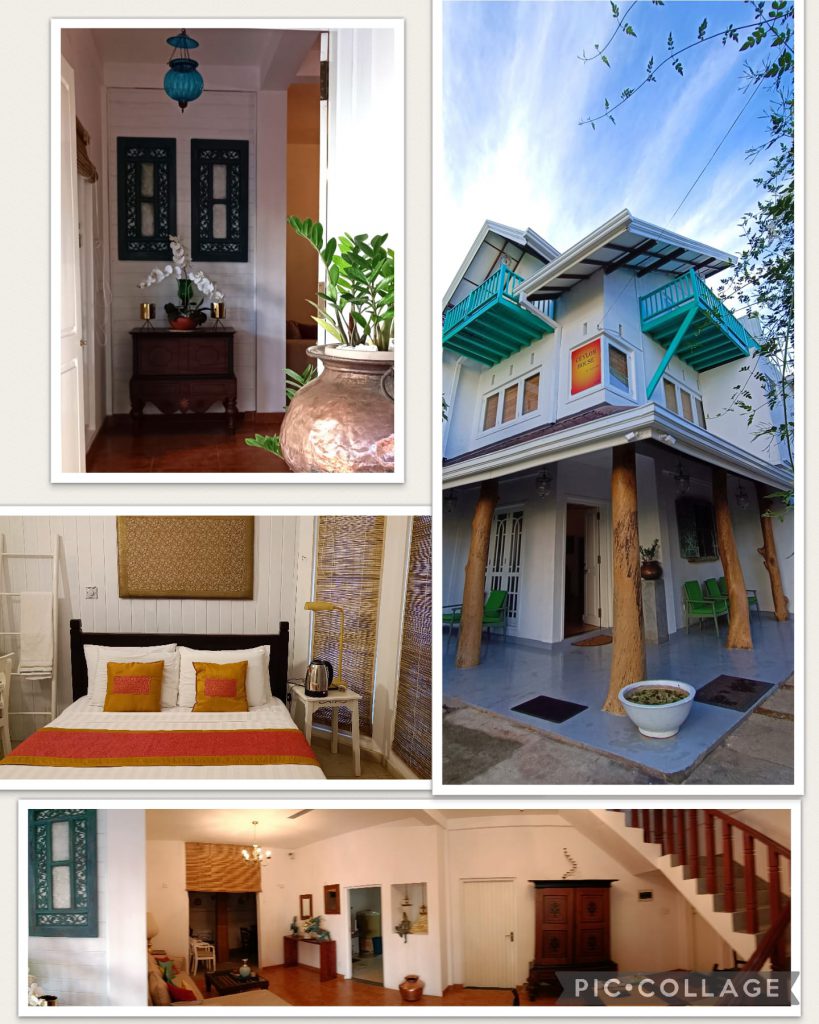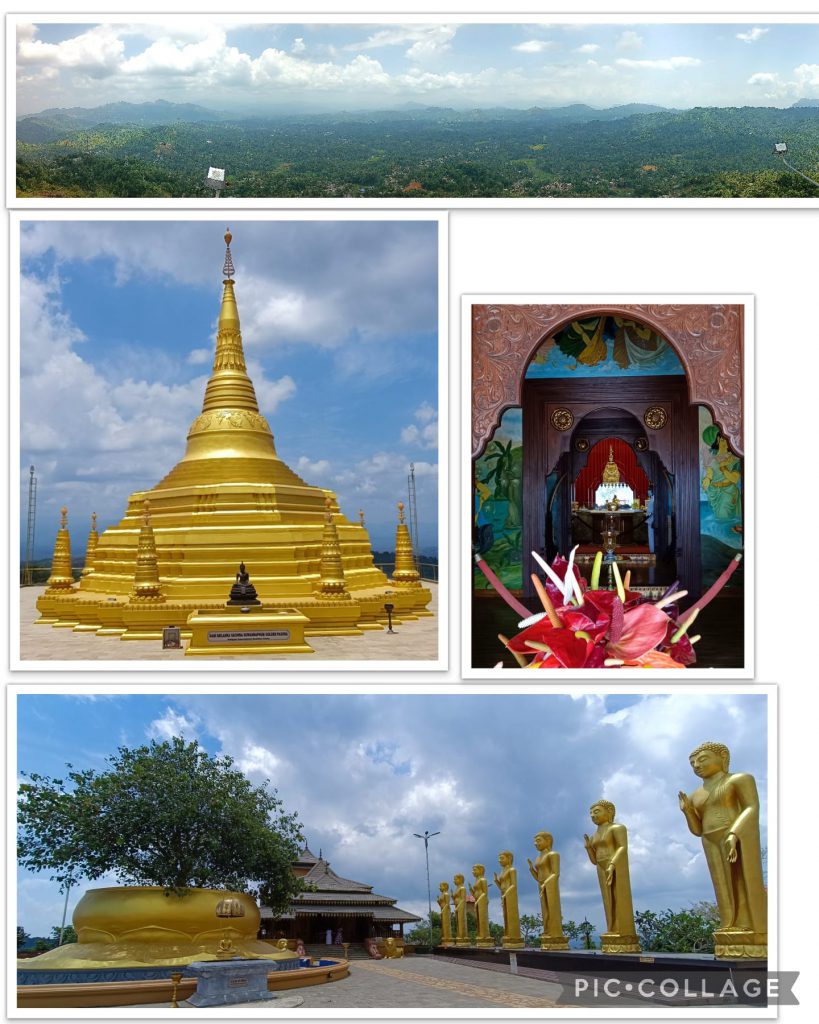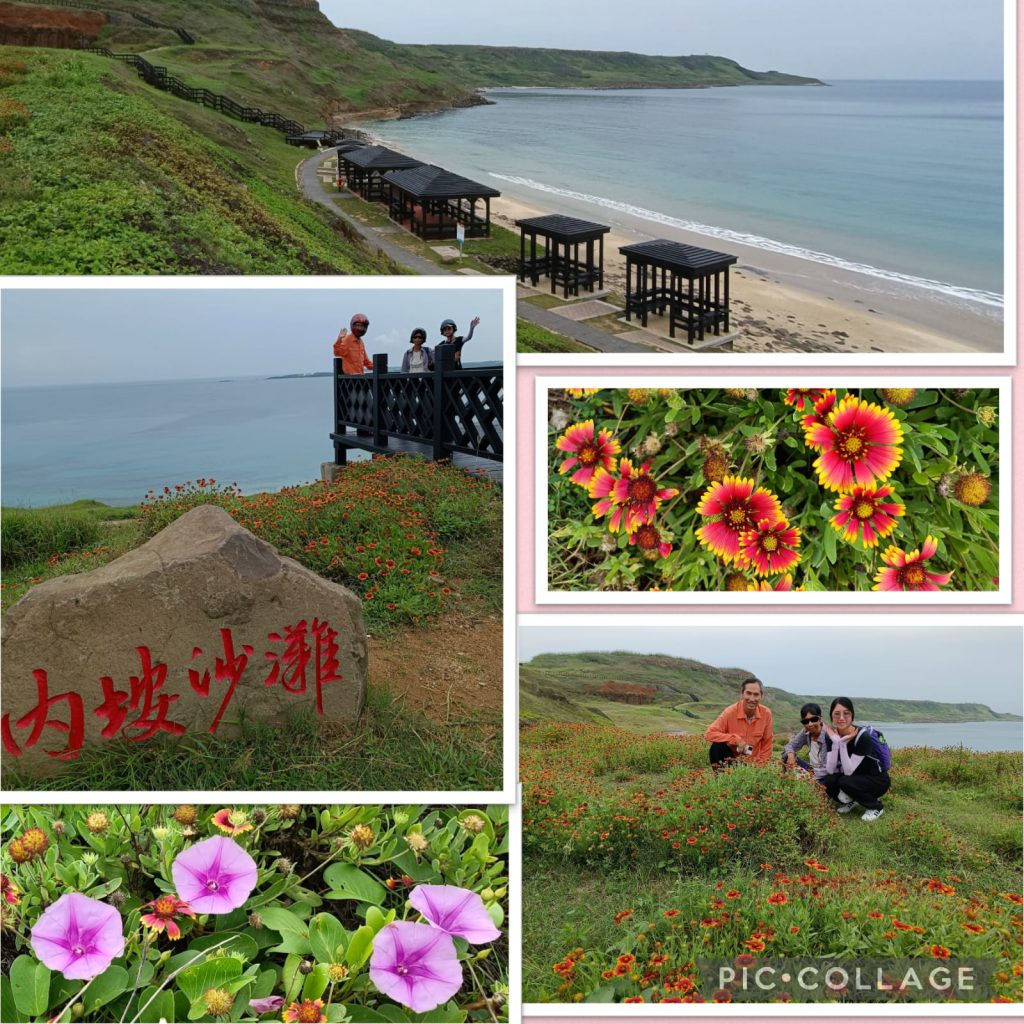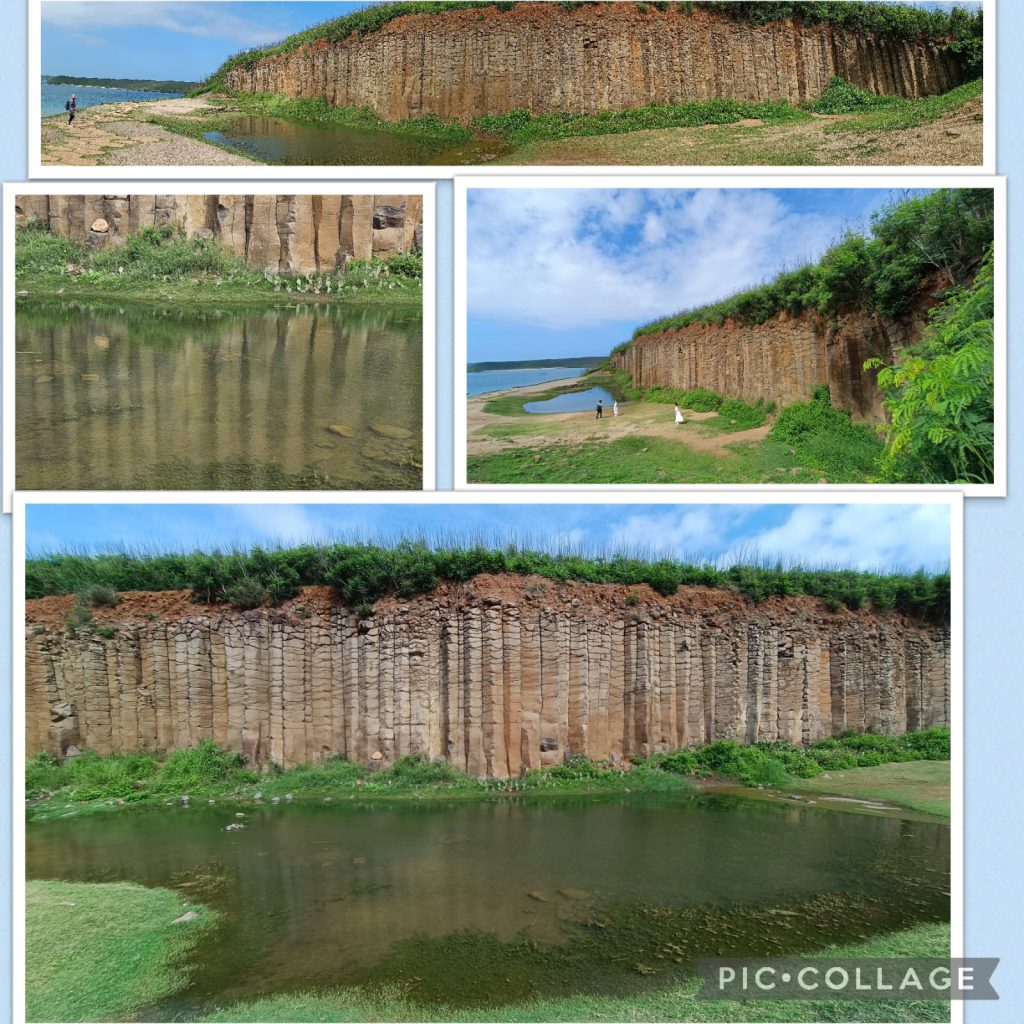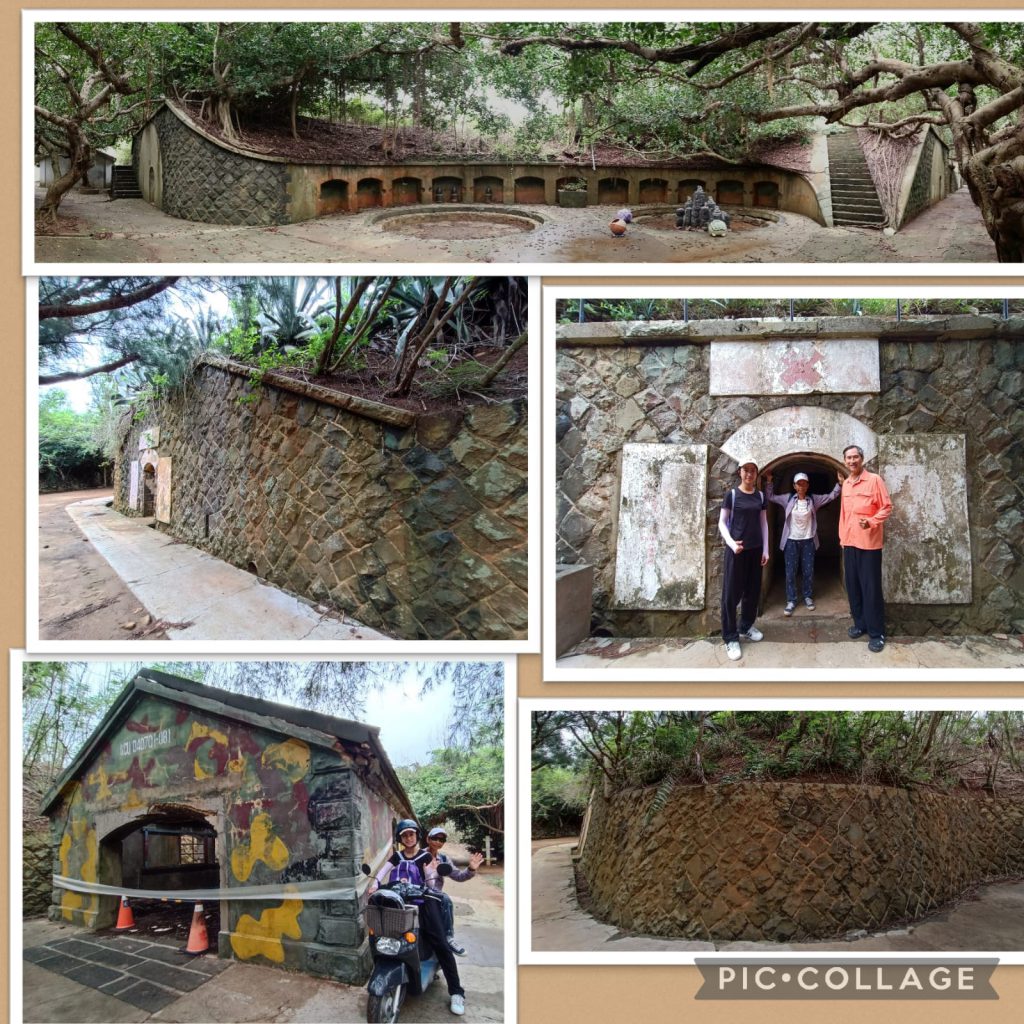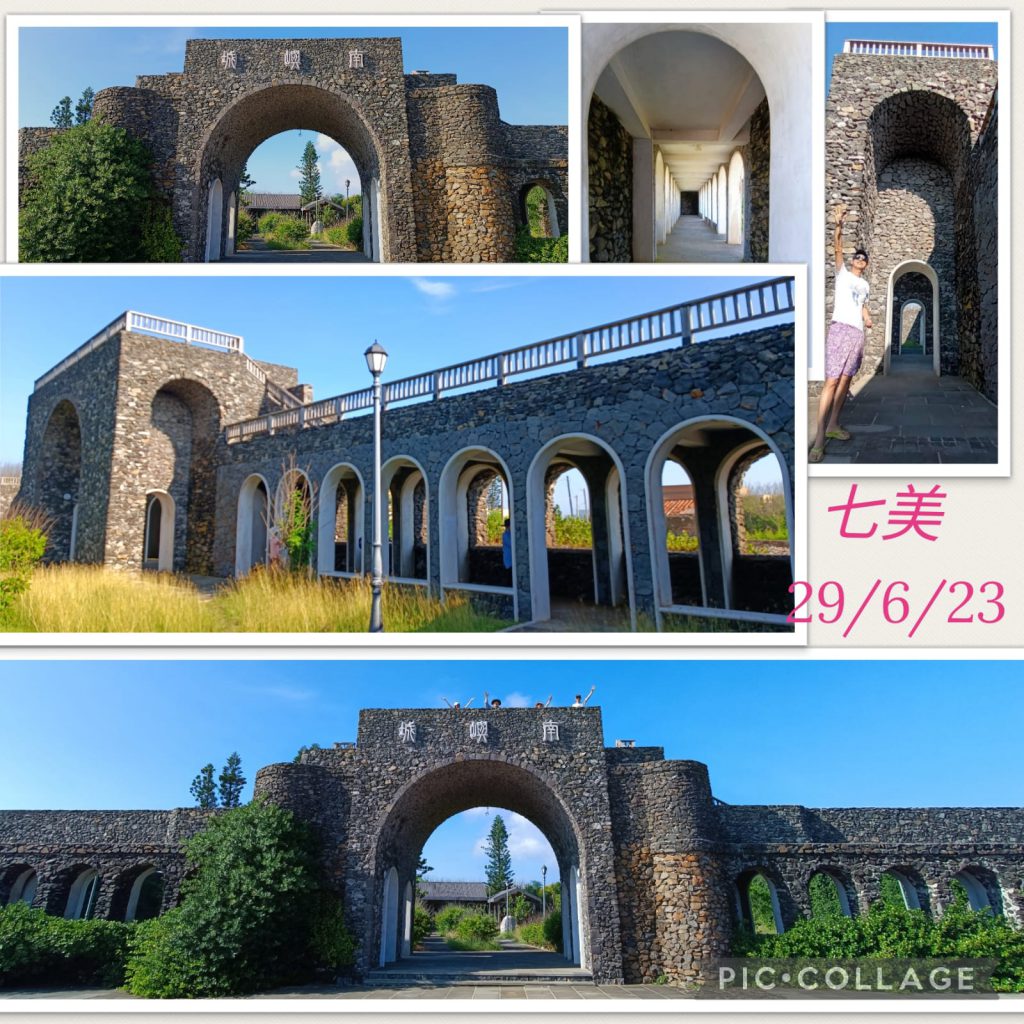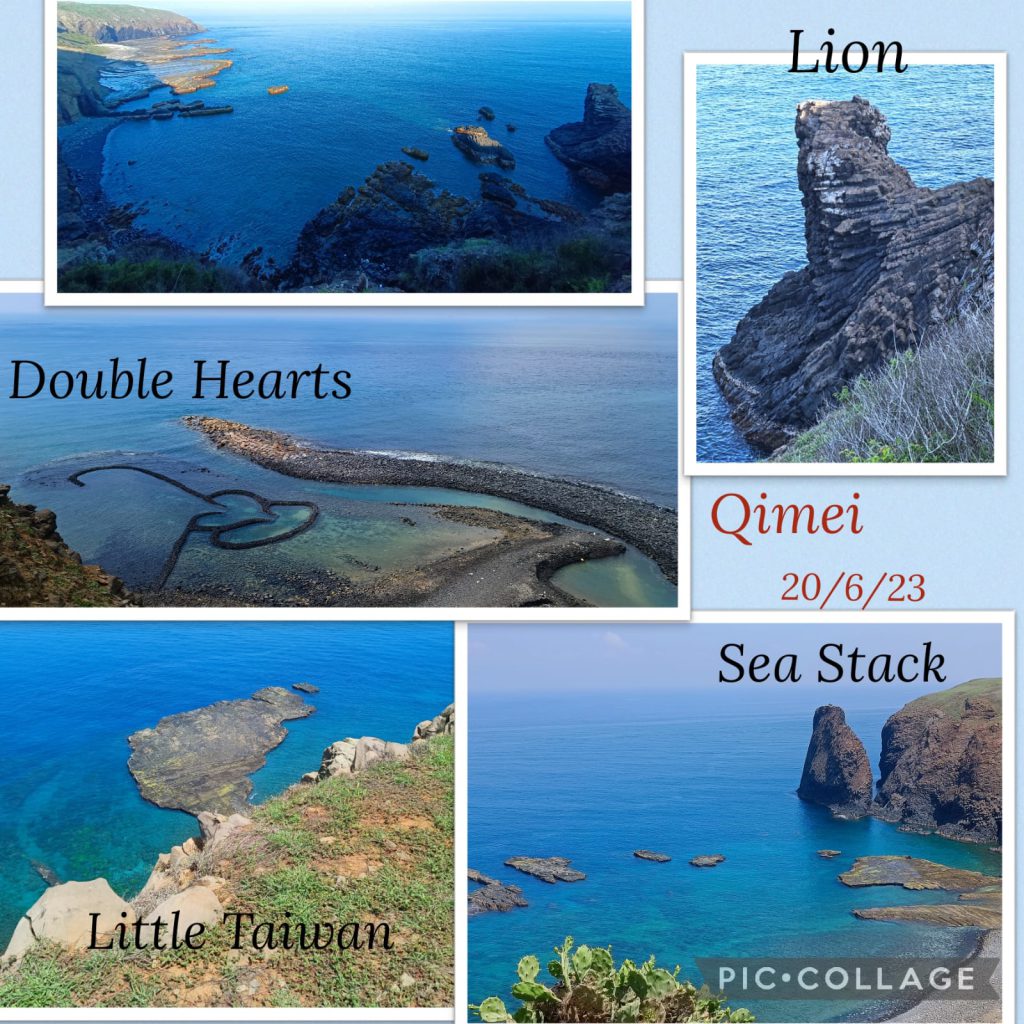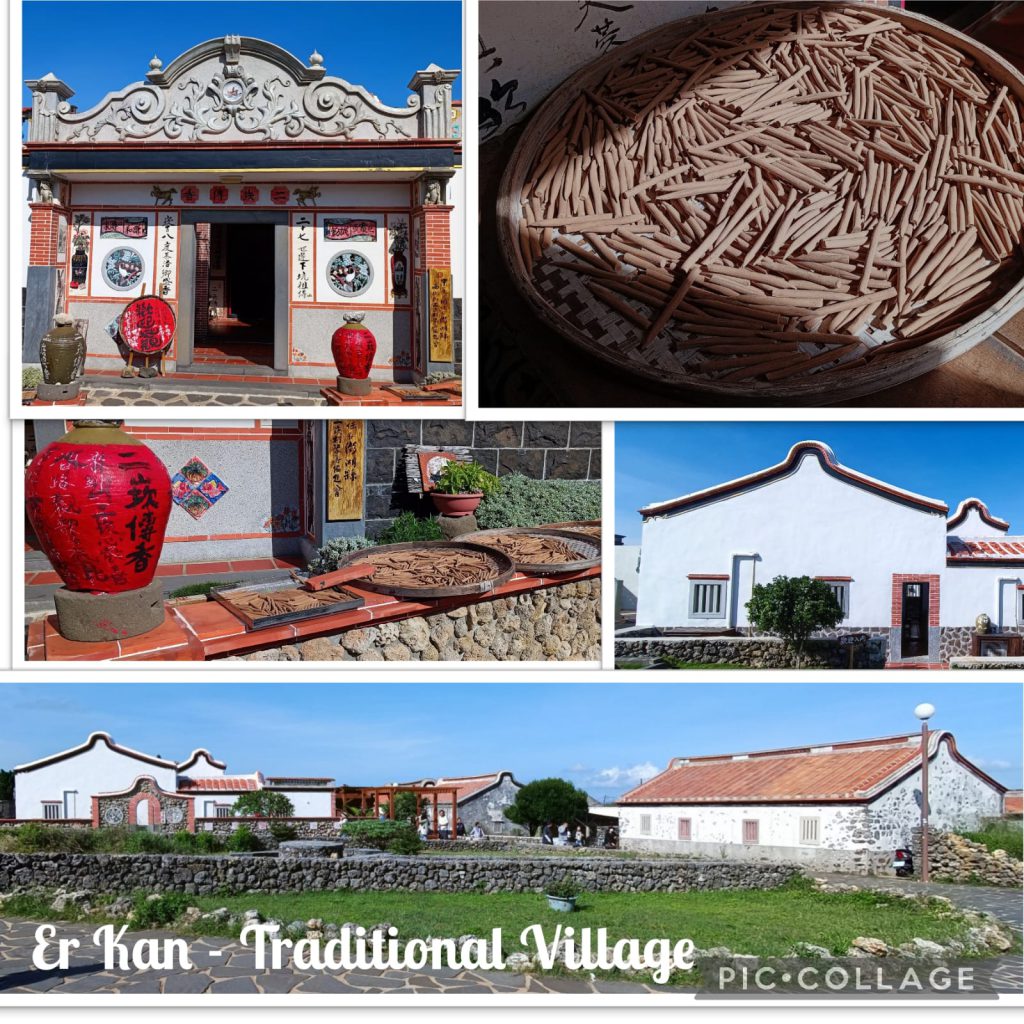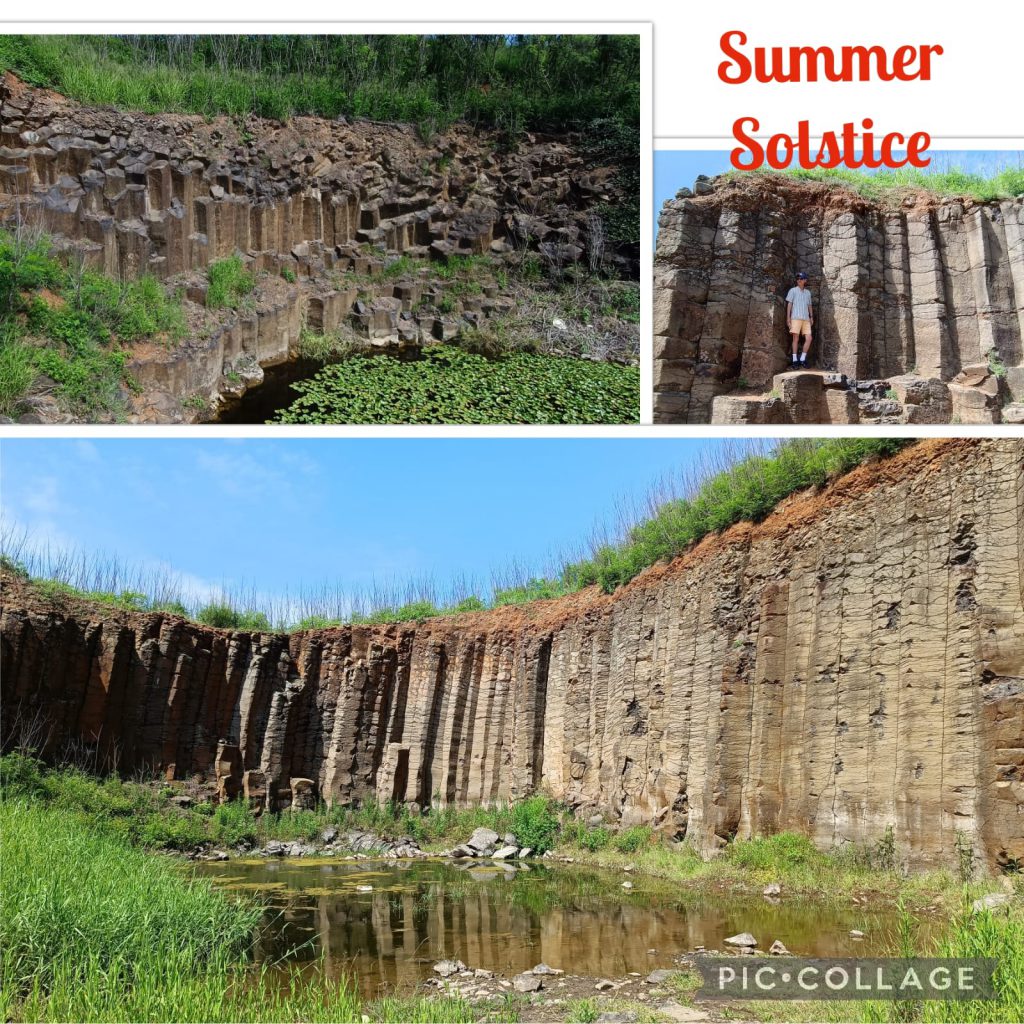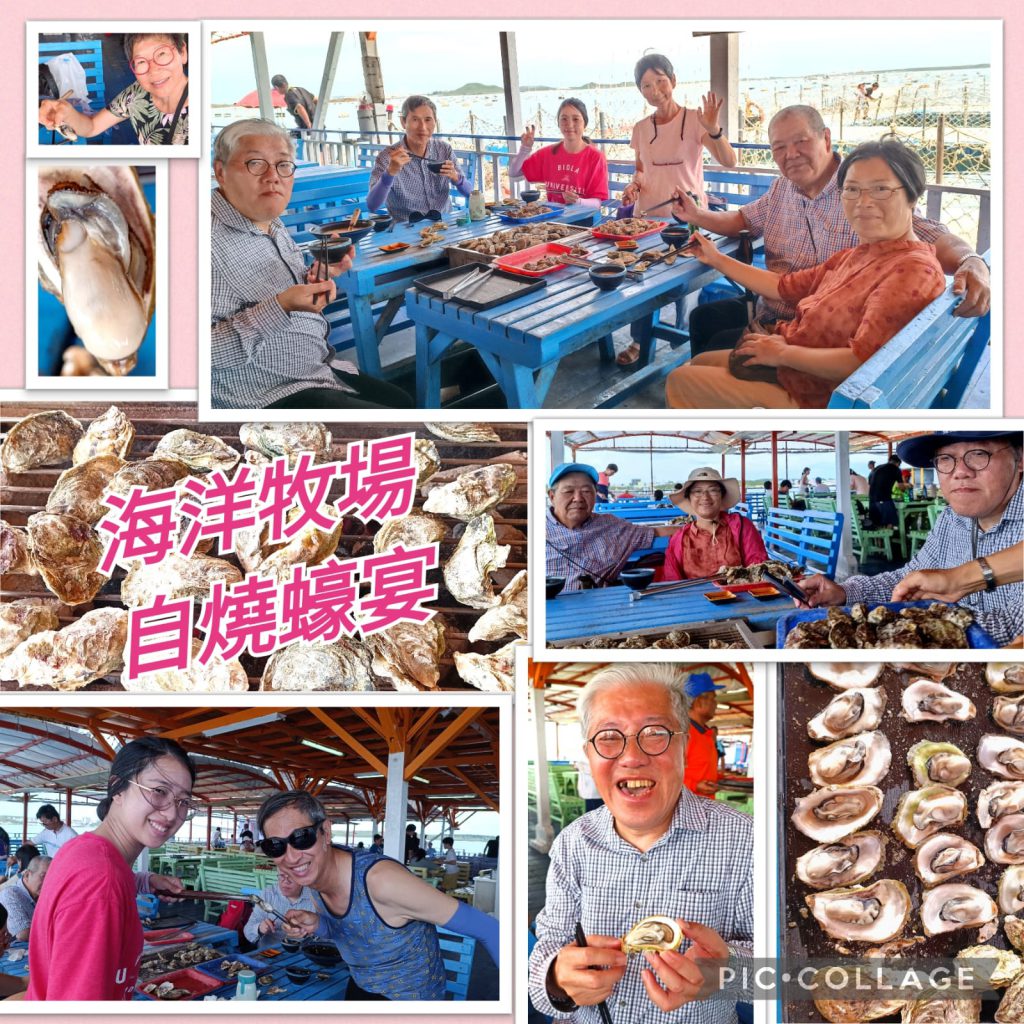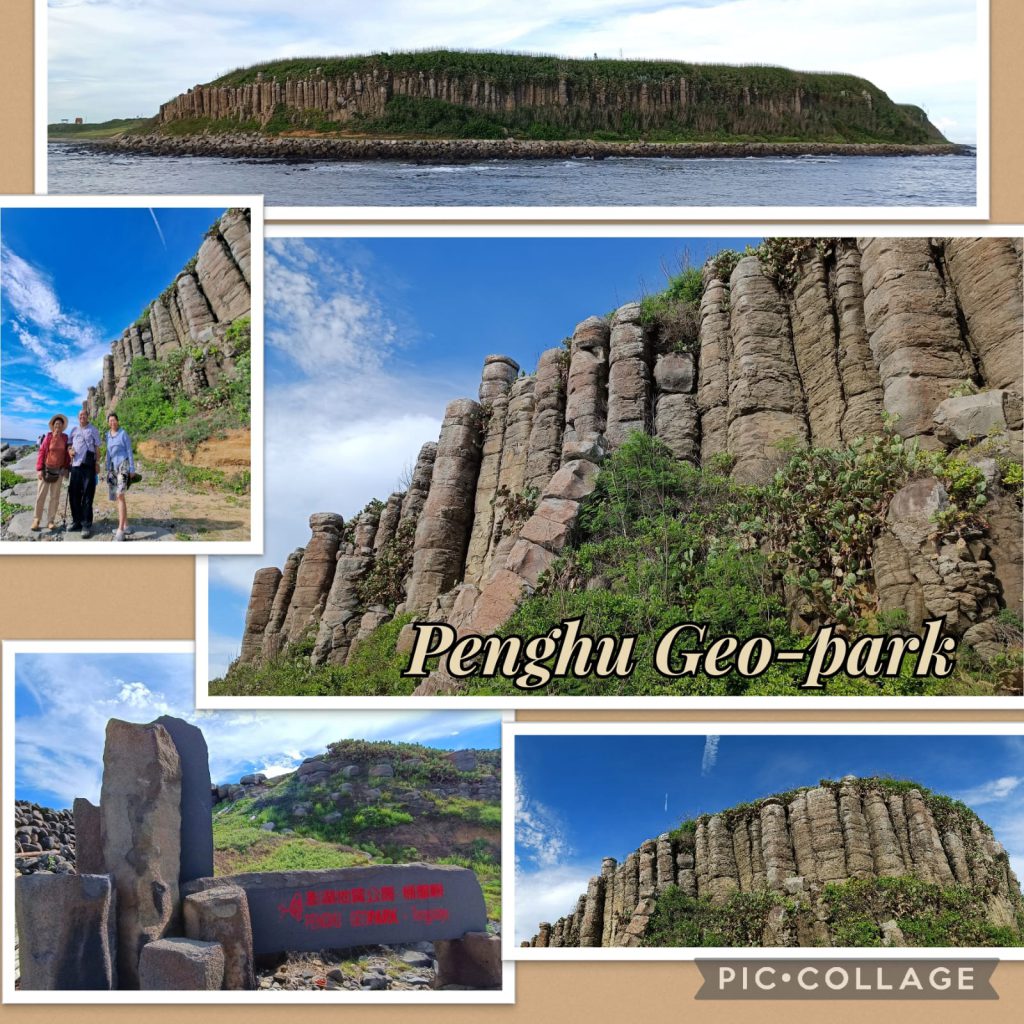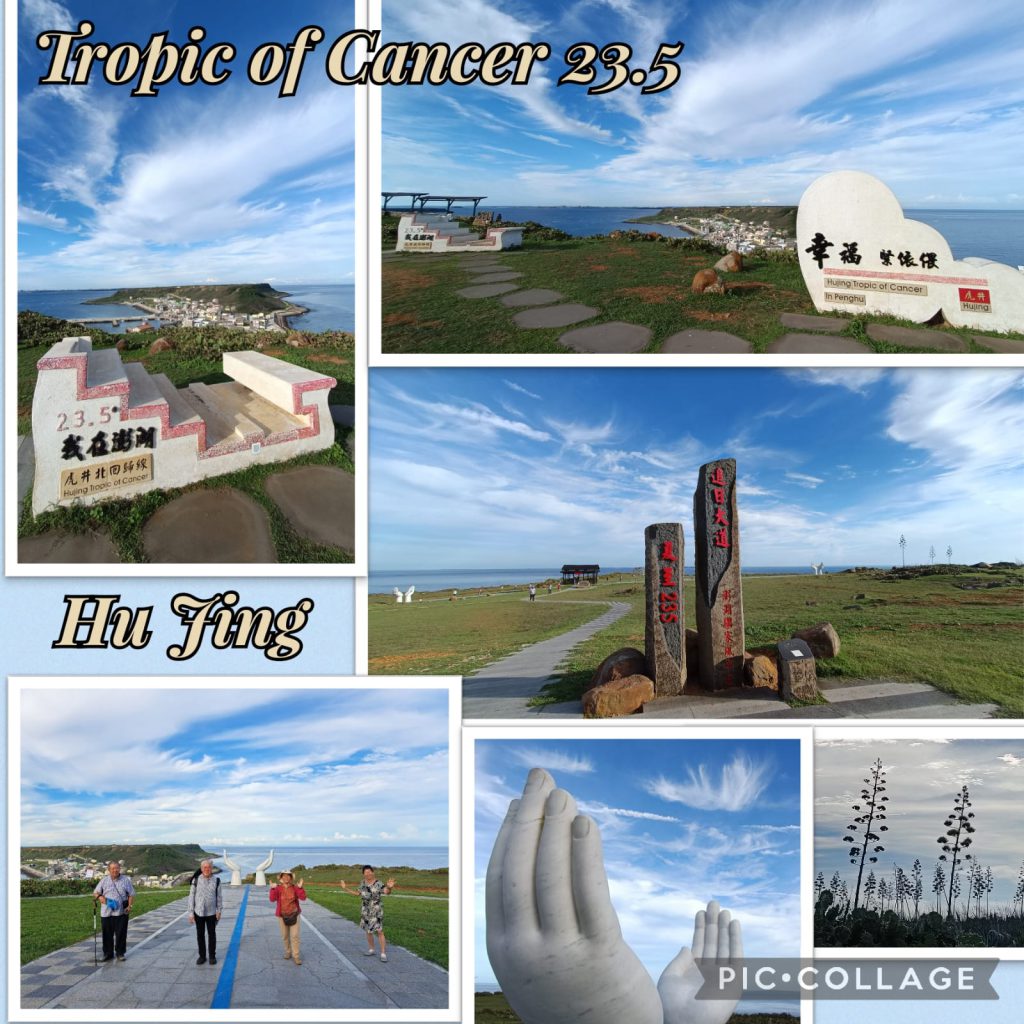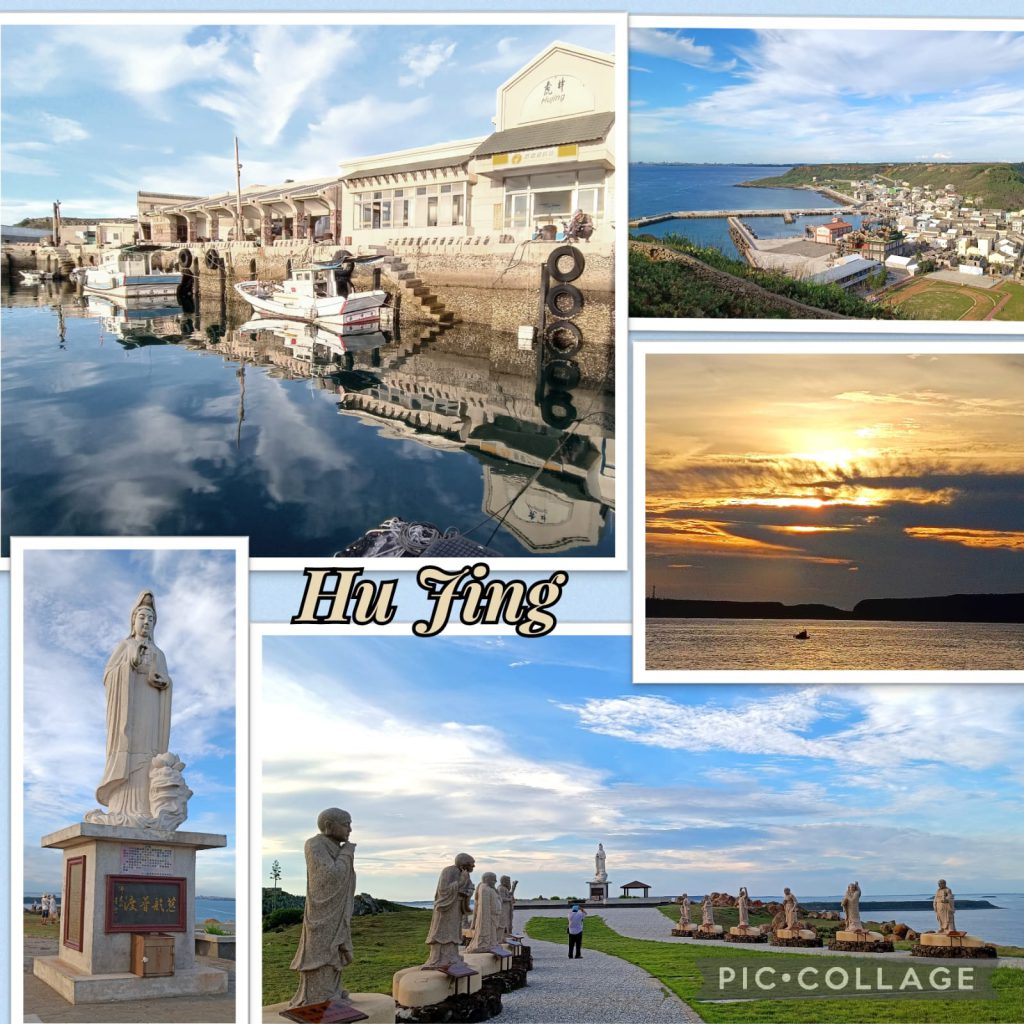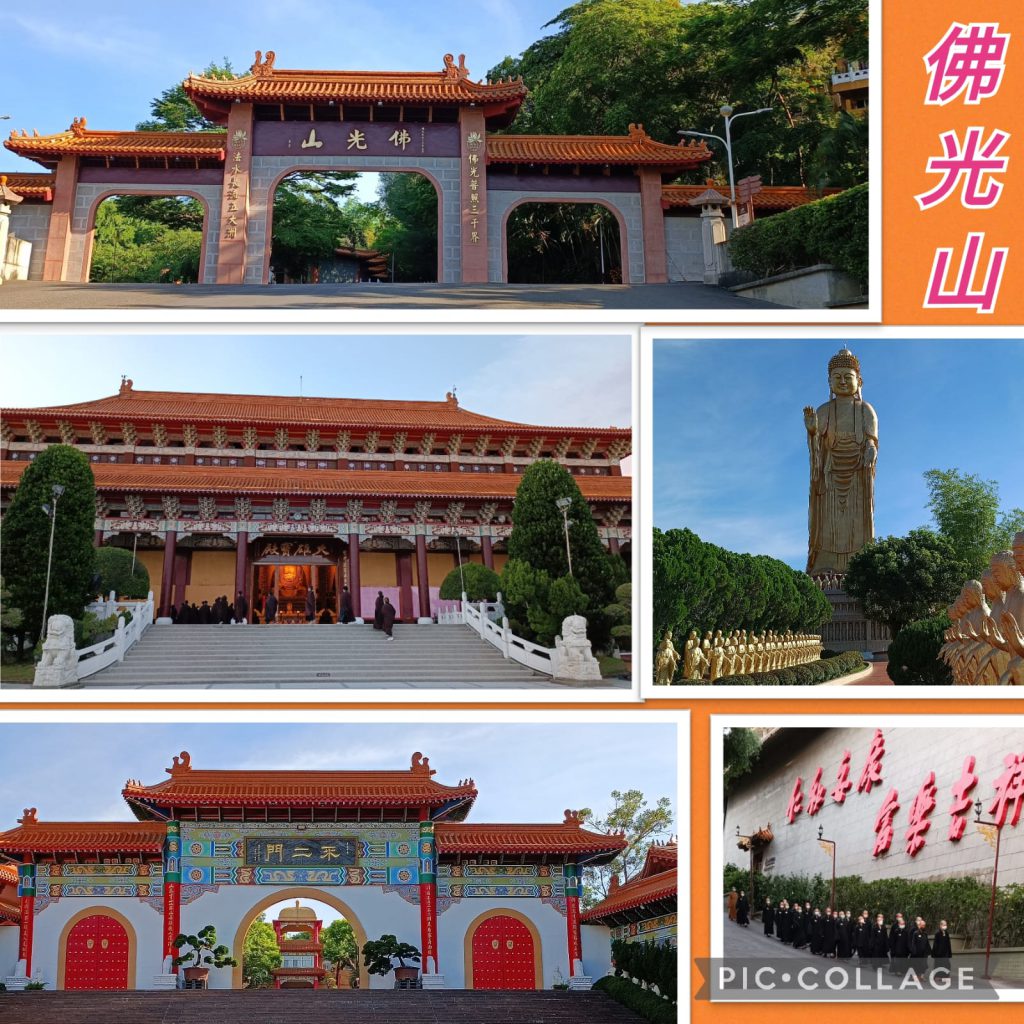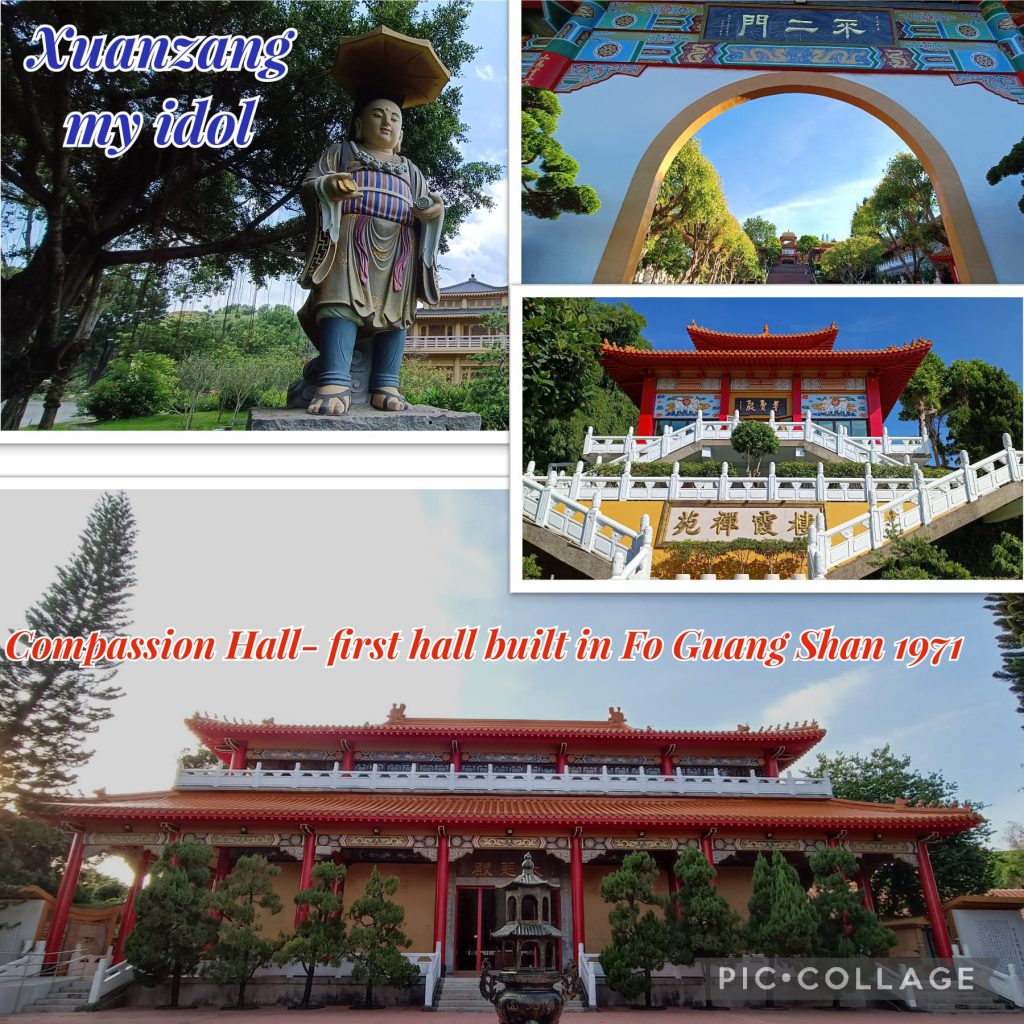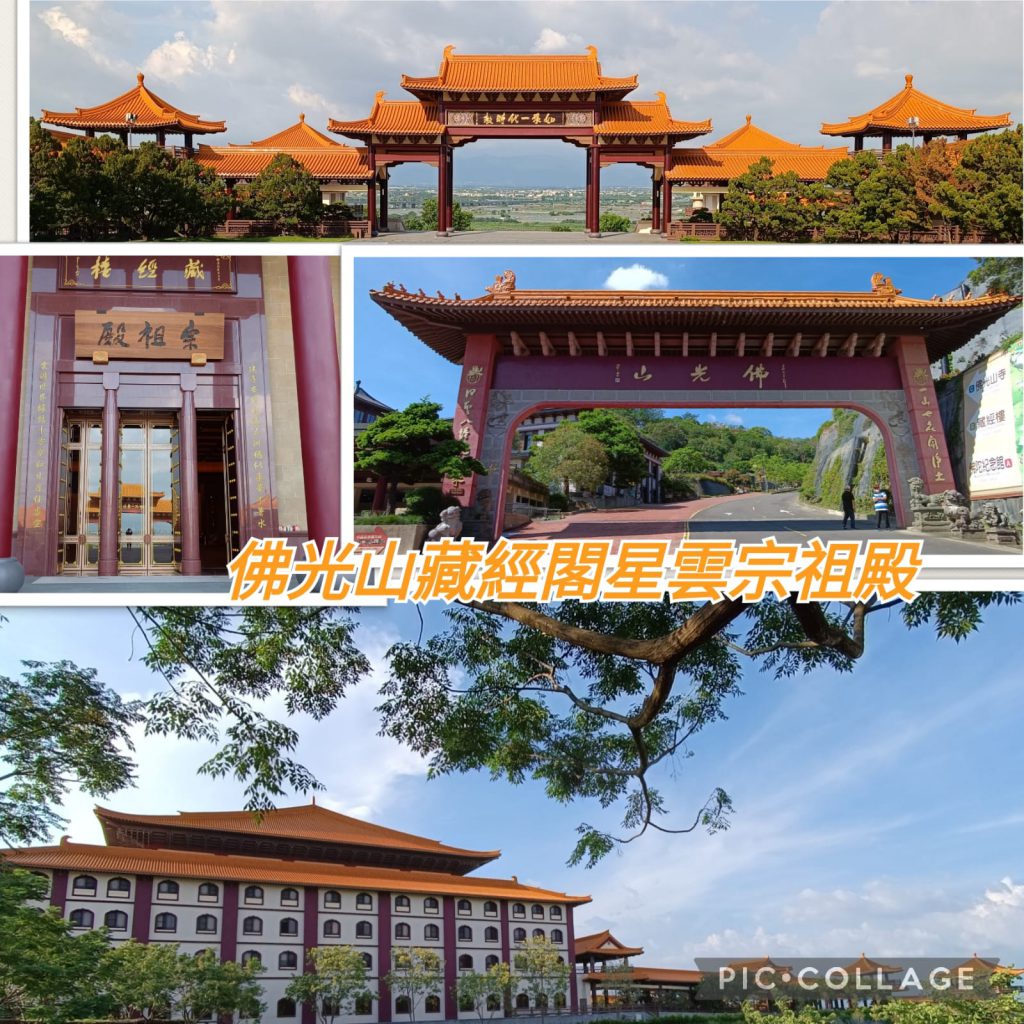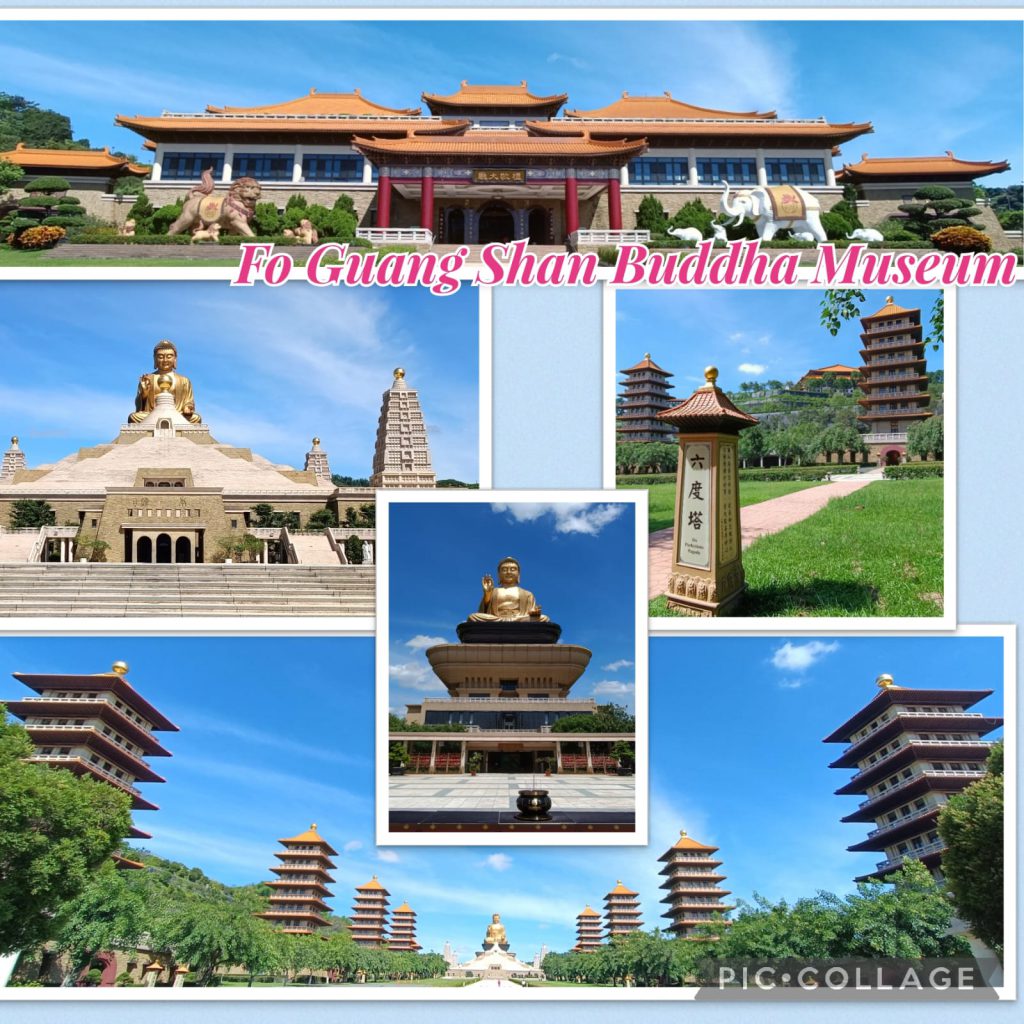Sri Lanka (2) 16-31 August 2023
Sri Lanka (1) 16-31 August 2023
Sydney & Melbourn 29 July – 6 August, 2023
Taiwan June 16-26, 2023
Why this trip?
Lawrence (my younger brother) and Sally (sister-in-law) moved to Pengh澎湖, Taiwan in 2021. On hearing that Lili, my niece, would be visiting her parents in June, I decided to join her as I would have enough time to complete my capstone project which was due in end July. My friends Leung, Flora and Kai decided to join.
Penghu
Located approximately 50km west from the main island of Taiwan, Penghu with an area of about 140 km2, is an archipelago of 90 islands and islets in the Taiwan Strait (collectively forms the Penghu County). These islands first appeared in the historical record during the Tang dynasty, was administered by China with brief European occupations by the Dutch (1622-1624) and French (1885) and was ceded to the Japanese in 1895. Since the end of WWII, Penghu has been defined and geographically acknowledged as part of Taiwan. The Magong Island 馬公嶼is the largest in the archipelago with the Magong City馬公市 with a historical centre is the largest city.
Penghu is the remnant of Miocene aged shield volcano. Its stratigraphy is dominated by two to four layers of basalt interbedded with sandstone and mudstone deposited in shallow marine conditions. The main island (comprising the Magong City and Huxi township 湖西), Baisha 白沙and Xiyu 西嶼are the three most populous islands that are connected via bridges. The Penghu Great Bridge connecting Baisha and Xiyu is the longest bridge in Taiwan.
Tourism has become one of the main sources of income of Penghu which is rich in tourism resources. There are numerous historical sites including the Central Street, Erdai Art Hall, Tianhou Temple, Four-eyed Well, Penghu Reclamation Hall, Jinquitou Fortress, Shuncheng Gate in Magong Island; the Eastern Fort and Western Fort, Erkan Historical Village and Yuwengdao Lighthouse, Three Fairies Pagodas in Xiyu Island; and the Qimei lighthouse in Qimei Island七美嶼. There are many natural and coastal attractions including the double-heart of stacked stones (also known as Twin Hearts Stone Weird), Daguoye Columnar Basalt, Fengqui Cave, Whale Cave and Xiaomen Geological Museum in Shomon Island, and the South Penghu Marine National Park.
June 16: Kaosiung & Penghu
I flew to Kaosiung 高雄to catch a short connecting flight to Penghu. Everything went smoothly and I was met by Lawrence around 2 pm in Penghu. Lawrence came with a car: he had bought a second-hand car to take me and my friends around. It is very considerate and kind of him. I told Lawrence about my hip problem, and he took me to his doctor in Magong. The ex-rays showed my hip was in bad state: the doctor said I should have hip-replacement at some stage.
Lawrence and Sally now live and work as a volunteer in a centre providing after-school service for students in Xiyu. This centre also run a summer camp. They live in an old house nearby. Lawrence showed me around while Sally and Lili prepared dinner.
June 17: Xiyu
We spent the day touring Xiyu on motorbike: I rode with Lawrence while Sally and Lili rode on another one. We went to see the Daguoye Columnar Basalt, visited the Eastern and Western Forts, and stopped at some small fishing villages and the Yuwengdao Lighthouse. I visited my first double-heart of stacked stones, an interesting man-made feature made by locals for catching fish during high tide. With my hip problem, I found getting on and off a motorbike not easy. Furthermore, as I was bitten by some insect the night before, my skin got rash making even more uncomfortable to sit on a motorbike under a baking sun.
June 18: Father’s Day
Today, we travelled around in Lawrence’s car. I found it easier and more comfortable to move around. We had a leisure day touring Xiyu, Baisha and Magong and visited the Ocean Resources Museum, the Penghu Living Museum, the Jinguitou Fortress and the Duxingshi Village which was a former barrack now revitalised into a cultural centre. I also consulted a doctor about the rash and was reminded to be careful and avoid insect bites. Kai arrived in the evening and stayed in the Magong City.
June 19: Qimei
We met up with Kai in the morning and took a ferry to Qimei, the southernmost island in the group which is fifth largest with an area of about 7km2. We hired a car and toured around. Unfortunately, we damaged it and had to pay a damage of about USD250. We stayed in a nicely designed and clean BnB and found a nice seafood restaurant near the pier. With a car, we went round this small island with ease and saw the iconic Twin-heart Stone Weird 雙心石滬at different time of the day – midday, high-tide and low-tide, the Little Taiwan (an islet resembling the island of Taiwan), a lighthouse, a few villages, the Seven Beauties Tomb and a small old fort. I was a bit disappointed at the sunset.
June 20: Qimei & Xiyu
We spent the morning touring Qimei before taking a ferry that took us to see two islands of the South Penghu Marine National Park including a Blue Hole on the way back to Magong. Owing to poor lighting, we did not see the amazing blue hue as advertised.
Today, Leung and Flora arrived in Penghu. Four of us stayed in a nice BnB by a beach in Xiyu not far from Lawrence’s place for two nights. The house is new with five rooms. The seafood in Penghu is excellent but the cooking style does not bring out the best taste of fresh seafood.
June 21: Xiyu, Baisha & Shomon Island
We went with Lawrence in his car while Sally and Lili rode a motorbike. Lawrence took us to visit the Xiyu forts and some attractions in Baisha including the Fengqui Cave, Whale Cave, Xiaomen Geology Gallery in Shomon Island. Then we visited the Erkan Historical Village and the Three Fairies Pagoda.
June 22: Dragon Boat Festival
Today was the Dragon Boat Festival and my birthday. The owner of the BnB and Lawrence treated us with delicious dumplings, chicken congee, fresh fruits etc. We checked out of the hotel and moved to stay in Magong for two nights.
Kai, Leung, Flora, and I toured on our own while Lawrence and family visited their friends. We took a taxi to the Jinguitou Fort in Magong. Unfortunately, it was closed on public holidays. We then went to the Duxingshi Village. It was so hot that I took refuge in a bookstore / coffee house and had a cold drink while others toured around. We also strolled along the Central Street, stopping at the Tianhou Temple and Four-eyed Well and looking at the old and restored buildings.
At 6 pm, we met up with Lawrence’s family and had a sumptuous seafood dinner in a private kitchen to celebrate my birthday. The chef is wonderful: we had the best dinner in Penghu. We returned the following night. We watched fireworks for half an hour. The park was full of people and atmospheric. A memorable birthday celebration!
June 23: Magong, Tongpan & Hujing
Today, we spent the morning in the Star Fish Farm where we had oyster BBQ for an hour in the middle of a bay. In the afternoon, we joined a boat trip to visit two islands close to Magong. We first spent about an hour in the Tongpan Geology Park with columnar basalt on the Tongpan Islet 桶盤嶼with an area of only 30 ha. The geology park though not expansive is worth visiting. We also saw a derelict but grand mansion which is an indication of its heyday.
Then we toured around the Hujing Island 虎井嶼with an area of 2.1 km2 in minibus. As most of the people have left the island, it looks deserted. But there are a few attractions on this island including the We Xishan Observatory Post, the Guanyin Park, and the Hijing Memorial of the Tropic of Cancer with a group of sculpture. Given its proximity to Magong, tourists provide an opportunity for revitalising the island economy.
June 24-26: Fo Guang Shan佛光山
Lawrence’s family left Magong for Tainan early in the morning. I flew to Gaosiung in the afternoon and made my way to stay in the Fo Guang Shan for two nights. Founded in 1967 by Master Hsing Yun (1927-2023) 星雲大師, the order which roots traced to the Linji school of Chan Buddhism, promotes humanistic Buddhism and is known for its efforts in the modernisation of Chinese Buddhism. Fo Quang Shan Monastery is its headquarters and is the largest Buddhist monastery in Taiwan and offers extensive education programs including four Buddhist colleges, three regular colleges and various community colleges. The order has over 1,000 monastics and over one million followers worldwide.
Apart from the Monastery and educational institutes, Master Hsing Yun built the Buddha Museum which covers more than 50 ha. Completed in 2011, the museum attracts Buddhists and visitors, local and overseas. The Jade Buddha Shrine is said to hold tooth relics of the historic Buddha. There is also an enormous 108-m high seated metal Shakyamuni Buddha. I spent It was so hot that I spent an afternoon inside the museum and found peace and tranquillity in the Shrine.
On June 26, I met up with Flora and Leung in the Museum and took a ride back to Gaosiung. We spent a leisure afternoon in Gaosiung before taking the evening flight back to Hong Kong.
Remarks
I like Penghu and shall return to visit Lawrence and Sally. I still have many islands to visit. But I shall not go again in the summer which is too hot. My short stay in Fo Guang Shan leads me further on my spiritual path. On July 2, I took refuge in the three gems and became a pupil of the Buddha.
New Year in Sydney December 25, 2022- January 10, 2023
The spectacular New Year fireworks in Sydney have been on the bucket list of many travelers. Though I am not a fireworks fanatic, I decided to make a special trip to Sydney over Christmas when my brother Alan and my cousin Wini decided to celebrate their 70th birthday and watch fireworks together in Sydney. This special occasion was joined by Lawrence, my younger brother, Sally, my sister-in-law and Lili, my niece from Los Angeles, Wini’s family (Bob, Paul and David) from the USA and her brother Geoffery from Hong Kong.
December 25: As the examination and course work for the first semester of the Buddhist Counselling Course at the University of Hong Kong ended in late December, I was able to leave Hong Kong before Christmas. Unfortunately, I caught COVID on December 16 and could not fly till I was tested negative for two days. Luckily, I was able to change my ticket and left Hong Kong on December 24 arriving in Sydney just in time for Christmas dinner on December 25. We had a wonderful Christmas gathering in the house of Shirley, my niece. I was very happy to have a lovely dinner with Alan, Vicki (my sister-in-law), Shirley and her family (Lee, Thomas and Asher), my good friend Karen and her husband Tony.
December 26 – 30: As a frequent visitor to Sydney, I have no urge to visit the tourist attractions. I spent most of the time with my family and went out to dine and catch up with my cousins who arrived on December 28.
New Year Eve and New Year 2023: We had a New Year Eve dinner at the Altitude Restaurant, Shangri La Sydney Hotel. The restaurant’s selling point is its panoramic views. Located on the 36 levels above the Sydney harbour, it offers sweeping floor-to-ceiling views of Sydney Harbour Bridge and Sydney Opera House in fireworks foray. We had a sumptuous 8-course dinner paired with wine. The food portion was so huge that we had to pack the steak, the duck and all the petit fours. The atmosphere with count-down and music, and the fireworks were wonderful. Given its price, the dinner is indeed something I would only take once in my lifetime. Anyway, it is unforgettable as it was the first time Alan, Lawrence, Wini, Geoffrey and I spent New Year Eve and celebrated New Year together.
January 2- 9: My cousins Geoffrey and Wini and family left on January 5 and Lili the following day. Lawrence, Sally, and I stayed on a few more days. Alan insisted on taking us to see a few places including the Sydney Harbour National Park, Manly, Mona Vale Rockpool and Featherdale Sydney Wildlife Park. As Alan has some health issues, we all did not want him to get overtired. We were, however, glad to find him energetic and in good spirits.
January 10: Lawrence and Sally flew to Kuala Lumpur just a few hours before my flight to Hong Kong. I got back just in time for the second semester.
Remarks: This trip is a very special trip for Lawrence and I: we want to celebrate Alan’s 70th birthday. To be able to celebrate together with Wini and her family and Geoffrey is a blessing. This means a lot to Alan. We all wish Alan health and happiness.
Germany (3) July 31 July – August 21, 2022
August 14: Berlin
Today was Sunday. I strolled through a small part of the leafy and peaceful Tiergarten to reach the historical Brandenburg Gate. I had brunch in Restaurant Berlin Mitte on Unter den Linden. A wonderful relaxing morning.
In the afternoon, I attended a concert held in the Kopenick Palace, a Baroque water palace of the Hohenzollern electors of Brandenburg built on an island in the Dahme River. Though without knowledge about music, I enjoyed the performance of the Trios of Classic and Romantic by a small group of musicians – Beethoven and Hayden Quartet Berlin. The garden is leafy and green: I enjoyed the beautiful outdoor setting by the river instead of visiting the museum inside the palace.
August 15: Potsdam
I visited Potsdam in 1990 and came to discover its former glory. Potsdam, sitting on the River Havel, is the capital and largest city of the German State of Brandenburg. Being the residence of Prussian kings and German emperors until 1918, it was well-planned and intended as “a picturesque, pastoral dream” with a balance of architecture and landscape. The city with over 1000 years of history, is known for its palaces, lakes and overall historical and cultural significance. There are numerous landmarks that include parks and palaces of Sanssouci, Germany’s largest heritage site. It was the location of the Potsdam Conference in 1945 after the WWII where a decision was taken to divide Germany into two.
Potsdam is only 25km from Berlin. I had a lovely breakfast with views of the majestic centre dominated by the Old Market Square, the marble Obelisk, the St. Nicholas Church (1830-1837) and several historical buildings. The area was bombed and badly damaged during WWII. The church was rebuilt and re-consecrated in 1981. destroyed before spending a morning at the Museum Barberini opened in 2017. The gallery exhibits Plattner’s collection of art from the former German Democratic Republic and special exhibitions ranging from Old Masters to contemporary art with a focus on impression including works of Rodin, Monet and Edvard Munch. I fully enjoyed the exhibits which had detailed information on both the artists and the works and the special exhibition with four virtually unknown paintings by Monet.
In the afternoon, I walked to the Sanssouci Park (a World Heritage property) with an area of about 300 hectares which is described as garden art at the highest level. It was first built in 1740s by Frederick the Great as a summer retreat. Later King Friedrich IV had the garden between the private Sanssouci Palace and the New Palace significantly expanded. The landscaped park was interwoven with French pleasure garden, natural scenes, and magnificent buildings of classicism and romanticism. It is expansive and I had time only to stroll around a small part of the park and visited the a few gardens, the Chinese Tea House, and a few buildings show a mix of European and Chinese architecture. It was so dry that the grass was brown and looked strangely eerie. Suddenly the sky darkened and it started to rain. I was caught in the rain and decided to leave without visiting the palace. I had Vietnamese noodle near the iconic Brandenburger Gate before catching a train back to Berlin.
August 16: Hamburg & Lübeck
The train from Berlin to Hamburg only takes about two hours. I like this city after my first visit in 1980. This time, I spent time on foot re-discovering the glory of this great port city in daylight and at night. I also used it as the base to visit Lübeck and Bremen.
Lübeck, a famous Hanseatic city, former capital city of the Hanseatic League, a commercial and defensive confederation of the most prominent and important cities along the Baltic Sea and the North Sea. While the importance of the league waned from the 16th century, Lübeck continued to thrive. The old city and its important structures have largely escaped bombs during the World War II. The Holsten Gate– a brick Gothic gate of the 15th century is the city’s icon. The skyline of the old town is dominated by the churches of St. Mary, St. Giles, St Peter and St Jacob and the Cathedral. The old town is studded with historical buildings and cobblestone streets. It is also famous for marzipan.
I arrived Lübeck before 1 pm. There were a lot of tourists and I found the heat unbearably. As I was not in a mood of walking, I went to a restaurant known for seafood and paid 18 euro for a fish soup which was average. Then I spent considerable time in the Hanseatic Museum (9 euro entrance fee). I had to wait till 3:45pm for an entry as only 25 persons are admitted for a discovery tour an hour! It is interesting with interactive exhibits. I visited the castle friary with a cloister while waiting. By the time I left the museum, it was too late to visit the hospital and most of the churches which closed at 6 pm. Anyway, I enjoyed strolling aimlessly looking at the picturesque townscape with timber-houses and gardens. The market square is very impressive
August 17: Bremen
Bremen is the largest city on the River Weser, the longest river flowing entirely in Germany and the capital of the German State Free Hanseatic City of Bremen. Bremen’s port together with the port of Bremerhaven at the mouth of the Weser is the second largest port in Germany after Hamburg. It has been a major cultural and economic hub of Northern Germany. Its City Hall and the Bremen Roland are World Heritage properties.
Bremen is a thriving city. I joined a guided tour (8 euro) to see the Town Hall which was built in the early 15th century while a new part was added last century. There is a famous wine cellar holding the largest and a large storage of the best German wines. A Roland statute stands in front in the market place. After lunch in the market place, I went to explore the Schnoor, a small well-preserved area of crooked lanes, houses of fishermen and shippers from the 17th and 18th centuries. Today these buildings are occupied by cafes, shops and art galleries.
August 18: Hamburg & Dusseldorf
Before taking the train to Dusseldorf, I spent the morning exploring the Speicherstadt and Kontorhaus District, one of the largest warehouse districts in the world. It still handles a third of the world’s carpet production, cocoa, coffee, tea, spices, maritime equipment and electronic goods. Building starting in 1883, the Speicherstadt is indeed a maze of canals and bridges, and has been smartly revitalised with museums, residential buildings, and offices. I enjoyed exploring the HafenCity, the newest area of Hamburg.
I arrived in Dusseldorf around 6 pm and was delighted to be greeted by Brita, an old friend. She took me to an Italian restaurant in the old city. I had a leisure stay in Dusseldorf before returning to Hong Kong with wonderful dinner with Brita every night. Brita also suggested me visit a gasometer and Essen Zollverein.
August 19: Gasometer Oberhausen
Today Gasometer Oberhausen is an impressive exhibition space using the the gas facility which was the largest gas facility in Europe. Built in the 1920s and reconstructed after WWII, it is an industrial landmark and an anchor point of the European Route of Industrial Heritage and the Industrial Heritage Trail. I am impressed by the innovating way this colossal facility has been renovated and put into use.
During my visit, I saw an exhibition on “The Fragile Paradise” (2012-2023). The exhibition showed the beauty of nature and the influence of humans on their environment. I saw many outstanding and award-winning photos on global warming and conservation, many of which have been seen in National Geographic and other magazines. The panoramic view from the top of the Gasometer standing at 117m above ground is impressive.
August 20: Essen Zollverein
Today I visited Essen Zollverein– an unusual World Heritage Site which has been named the most beautiful coalmine in the world. Open in 1851, the industrial complex once one of the largest coal mines in Europe, played a significant role in bringing wealth to the Ruhr region. In its heydays, it employed over 600,000 people and was closed in 1986. The site is expansive with many colossal industrial buildings and the permanent exhibition has over 6000 exhibits showcasing the fascinating archeology and history of the industrialization of the Ruhr region. Worth visiting!
I spent the rest of the afternoon with Brita leisurely visiting gardens and had an early dinner. Today I also took a COVID test which had to be done within 24 hours of the returning flight to Hong Kong. Everything went perfectly as Dusseldorf is a very efficient city. I paid only 50 euro for the test which result was available within three hours.
August 21: Dusseldorf
Before leaving Dusseldorf, the capital city of North-Rhine Westphalia and the seventh largest city in Germany, I spent the morning touring the city for the first time. I walked from the King’s Alley, Hofgarten (old city park), all the way to the old town and the River Rhine stopping all major spots including the striking Performing Arts Theatre designed by architect Bernhard Pfau and opened in 1970 with modern architecture, the Town Hall and the St Lambertus Basilica founded in 1288. I met a nice Vietnamese who showed me his house which dated back to the 16th century.
I took an afternoon train to Frankfurt and flew back to Hong Kong for a seven-day quarantine in a hotel near my flat. All in all, I had a most wonderful long journey since the onset of COVID in 2020.
Germany (2) July 31 July – August 21, 2022
August 9: Baden-Baden & Leipzig
Before taking the 2:31pm train to Leipzig, I took a leisure stroll through the elegant spa town before visiting the Frieder Burda Museum, a beautifully designed modern museum. I spent over two hours looking at the paintings and exhibits of the modern era. I had a light lunch at the Casino terrace: a glass of Reisling and a fresh pasta cost only 21 euro. Great value for the quality of food and atmosphere!
I got on an IC train and had to change in Frankfurt. The trains were very crowded. When I arrived in Frankfurt, I found that the connecting train to Leipzig would be delayed for over an hour! I escaped to a bar which was empty. I took a beer and was relieved when the train finally set off after 5:16 pm. I arrived in Leipzig after 8pm. Ibis Hotel is not far from the station.
Leipzig, Germany’s eight most populous city with over a population of 600,000, has been a major centre for trade, culture, learning and music. The city was founded in 1160. Johann Sebastian Bach (1685-1750) and Felix Mendelssohn (1809-1847) both lived and worked in Leipzig. The Oper Leipzig founded in 1843 is one of the most prominent opera houses in Germany. Leipzig University founded in 1409 is one of the oldest universities. Leipzig is the main seat of the German National Library, the seat of the German Music Archive and the German Federal Administrative Court. It has also played a significant role in precipitating the fall of communism in Central and Eastern Europe in 1989.
I strolled around the old town. A live band was playing in the well-lit up market place in front of the Old Town Hall, a landmark of Leipzig in Renaissance style. There are numerous eateries and pubs. People were drinking, enjoying the music, dancing and soaking in the atmosphere. I seldom go out in the evening. But I find Leipzig at night charming. The old town is a gem with beautiful renaissance and baroque architecture. I am most impressed by the merchant houses and passages with beautifully decorated shops.
August 10: Leipzig & Dresden
I spent seven hours exploring the old town. I started at the Riquet Coffee House. The trademark of the company is two copper elephant heads that frame the front door of the coffee house. The company has trading tradition with East Asia and the Orient since 1574. The interior decorations and architecture of the building in Art Nouveau style, are exquisite with oriental characteristics.
After having a nice coffee, I walked to the famous St Thomas Church believed to be the church of the Augustinian monastery founded in 1212. The church is now in Neo-Gothic style, stripped off the baroque style in Bach’s tenure as Cantor of Leipzig (1723-1750). In 2000, it celebrated the 250th anniversary of Bach’s death (Bach was buried in the church). Martin Luther preached here in 1539. The church boys’ choir is of international fame.
I strolled to the New Town Hall which main tower standing at 114.8m is the tallest city hall tower in Germany and then the August Plaza which is dominated by the Oper Leipzig on its northern edge, the University of Leipzig on the western side, and the Mendebrunnen (a fountain) on the southern side. I took Tram 15 to visit the Monument to the Battle of the Nations (which is also known as the 1813 Battle of Leipzig where Napoleon’s French army was defeated. This colossal imposing monument in a pyramidal shape measuring 91m tall and containing 500 steps to a viewing platform at the top, was completed in 1913 to commemorate the 100th anniversary.
When I was back to the plaza, I stopped at the University of Leipzig, looking at the new Paulinum which stands at the site of the old university church – St Paul University Church which was destroyed in 1968. I am most impressed by its bold architecture which embraces the ruins and modernity. Famous alumni include Angela Merkel, Friedrich Nietzche, Richard Wagner, Johann Wolfgang von Goethe etc.
The last place I visited today was St Nicholas Church first constructed in 1165. Its Gothic hall was constructed in the 16th century with a baroque tower added in the 18th century. In 1989, Monday demonstrations began subsequently becoming the centre of peaceful revolt against communist rule.
I like Leipzig which has attractive eateries of all price ranges. I saw a few Indian restaurants and decided to take a lamb biryani and had a delicious lunch! I took the 5 pm local train RE50 to Dresden which would be the base for three nights. It was on time but very crowded. Many had to stand all the way. I arrived just before 7pm and stayed at the Pullman Hotel near the train station.
Dresden, the capital city of the state of Saxony on River Elbe, is Germany’s 12th most populous city. The city heavily bombed during the WWII has been restored and renovated since reunification. It is regained its former glory as a cultural and educational centre. Dresden has some 13,000 listed cultural monuments and eight districts under general preservation orders, is known for its Baroque and Rococo architecture.
I was in Dresden in September 1990 soon after the fall of the Berlin Wall. Vivid images of an eerie and derelict railway station with broken glasses and the sad state of deprivation and ruins in the city centre were still on my mind. I walked to the old city centre and noticed the remarkable transformation of Dresden since my last visit. There is still plenty of constructions in the city. I watched a lovely sunset on the bridge over River Elbe and returned to the hotel after 9 pm.
August 11: Bastei Bridge and Tisa Rocks
I made a trip to see Bastei, a spectacular rock formation rising 194m above the Elbe Sandstone Mountains. Reaching a height of 305m above sea level, the jagged rocks rising to formed by water erosion over one million years ago, are the major landmark of the Saxon Switzerland National Park. To get there, I had to take a train to Kurort Rathen and a ferry across River Elbe (2.5 euro return).
It is an easy walk from the landing point to the Bastei Bridge. The entrance fee to visit a former castle linked up with steel walkways is only 2.5 euro. Views of all directions from the bridge are stunning. I was scared to look down and stand at the edge. I had a most delicious rainbow trout and a beer at the Panorama Restaurant Bastei for only 23 euro. The quality food and views are superb. One day I would like to return and stay at the Berghotel near the bridge with excellent panoramic views!
I took the short Schwedenlocher route and hike to Amselsee. The rocky path down is incredible with close views of gorge, narrow passages and gigantic stones! As it was still early, I took the train to Bad Schandau a spa town. Apart from an iconic church in the market square, there is not much. I was tempted to go to the spa. But as I had not bought swimming costume with me, it was not possible! Rathen is another spa town in the area.
August 12: Gorlitz & Bautzen
Gorlitz bordering Poland is just an hour and a half by train from Dresden. It is a well-preserved town which history began in the 11th century as a Sorbian settlement. It has been under German, Czech, Polish and Hungarian rule with a diverse culture and rich architectural heritage (Gothtic, Renaissance, Baroque, Neoclassical and Art Nouveau). Its various sites have been used as filming locations. The train station is impressive with blue tiles.
The town is picturesque without too many tourists. I had a lovely stroll from the train station to the old town. Some parts though run-down, are tidy and mostly restored. I did not follow the usual touristic path- I first went down the Hospital Street and arrived at the theatre and cultural museum. I walked round the outer path and finally arrived at the town hall and market square which are filled with beautiful merchant houses of all architectural styles. It has a Baroque museum and Schlesisches Museum. As the explanations are all in German, I decided not to visit.
I visited the St Peter and Paul Church that dominates the historic old town with its copper-covered high roof and the pair of towers. I also went to the Trinity Church of the Franciscan Order where I learn about the philosophy of Jacob Bohme who was a native.
I entered the Polish town of Zgorzelec when crossing the bridge over River River Neisse. I had lunch in a Polish restaurant with full views of the imposing St Peter and Paul Church.
After lunch, I followed the Jacob street to the train station and took the train to Bautzen, the historical capital of Upper Lusatia and an important cultural centre of the Sorbs. Bautzen was a secret prison for prisoners of conscience during the time of the German Democratic Republic another fantastic medieval town. I had a leisure stroll in this picturesque medieval town dominated by the Ortenburg Castle built by the House of Zahringen in 11th/12th century to protect the Kinzig Valley and the St Peter’s Church (1220-1497), one of the oldest and largest simultaneum churches in Germany. Today, Catholic and Lutheran altars are located on separate sides of the sanctuary.
August 13:Dresden, Berlin & Brandenburg
I spent a leisure morning strolling in the old city centre of Dresden before taking a EC train to Berlin in the afternoon. It is a pleasant walk from the station to Atlmarkt. On the way, I stopped at a Saturday market with a lot of handicrafts. I found the Kreuzkirche (the Church of the Cross) most impressive. Set on fire during the bombing of Dresden on 13 February1945, the church stripped off traditional decorations has been restored with the interior refurbished in its 1955 condition. I sat listening to an organ performance for almost half an hour.
Dresden’s imperial centre comprising the Frauenkirche, museums, the Theatre square, the Augustus Bridge and Terrace etc is impressive. There were too many local and overseas tourists milling around. The weather was excellent and I spent my time outdoor watching the river flowing by. Then I spent two hours on the train and arrived in Berlin. I stayed in a hotel close to the train station.
As it was early, I took the train to the nearby Brandenburg on the River Havel known for its Gothic, red-brick buildings and served as the capital of the Margravite of Brandenburg until it was replaced by Berlin in 1417. Today, it is a small town with a relaxing atmosphere. I visited the Cathedral and the Gothic House in the old town (Ritterstrasse 86) dating back to 1425 which is almost in its original structure. I understand it is one of the very few architectural examples of the urban, non-stately, secular brick building style of the Mark Brandenburg 15th century. I saw my first 5.35m high statute of the knight Roland made of sandstone outside the Old Town Hall. The statue was erected in 1474 as a symbol of the town’s independence.
Germany (1) July 31 July – August 21, 2022
Germany is a large country in Europe with 43 cultural and 3 natural UNESCO sites. I traveled by train to visit parts of Germany that I have never been before and revisit Berlin, Dresden, Hamburg and Dusseldorf. Before departure, I was delighted to learn the offering of a 9-euro ticket for travelling on all modes of local and regional transportation including the train, bus and tram for a month. I also bought a train pass for seven day (€280) for taking fast EC/ICE trains.
July 31: Mannheim
I flew from London after 11:30am and arrived in Frankfurt after 2pm. Owing to staff shortage problem, I had to wait my luggage for some 30 minutes. Frankfurt airport is generally efficient with an integrated transportation network. I purchased a 7-day train pass and a 9-euro pass at the Deutsche Bahn (DB) centre. By 4 pm, I was on my way to Mannheim where I would spend two nights.
It was boiling hot. Luckily, I stayed in an air-conditioned studio in a modern building close to the railway station. It was Sunday and everything was closed. After walking around the town centre for about two hours, I found nothing exciting and retired to my comfortable studio and had a good sleep.
August 1: Speyer & Worms
I took the train to visit two nearby historical cities. Speyer is an old city with a beautiful and well-preserved gate. Its Cathedral and the Jewish Courtyard – remnants of medieval synagogue and an intact mikvah (a bath used for ritual purpose) are both World Heritage properties. Construction of the cathedral began around 1000 years ago and become one of the most prominent Romanesque monuments from the time of the Roman Empire. It is the biggest Romanesque church in the world with unique architectural style, rich in details, colours and artwork. I paid to enter the crypt which is the burial site of eight Holy Roman Emperors and German kings. Impressive!
My mobile went dead and I spent considerable time to fix it to no avail. I had a wonderful time strolling in the old town, visiting the Memorial Church (built between 1893 and 1904 in memory of the protest taking place in the Diet of Speyer by the Protestant rulers of the Holy Roman Empire in 1529) and the Trinity Church a Protestant church built between 1701 and 1703 in late Baroque style.
Worms is one of the oldest cities in northern Europe. It was the capital of the Kingdom of the Burgundians in the early fifth century and has been a Roman Catholic bishopric since the seventh century. The cathedral with Romanesque architecture is one of the three imperial cathedrals on the Rhine. More than a hundred imperial Diets had been held in Worms and Martin Luther (1483-1546) was declared a heretic in the Diet of 1521. It is also one of the historical ShUM-cities as a cultural centre of Jewish life in European during the Middle Ages. Its Jewish sites (along with those in Speyer and Mainz) are UNESCO sites.
The old town is lovely with many old churches. The Luther Monument – a group of statues, stands solemnly in a park to commemorate the Protestant reformer Martin Luther. I visited the imposing St Peter’s Cathedral located at the highest point of the town. Constructions began in the seventh century and most of the cathedral was completed by 1181 by Bishop Burhard II. There are a few churches from the 13th century namely St Paul’s Church, St Andrew’s Collegiate Church and St Martin’s Church.
I walked along the city walls and wanted to visit three Jewish locations which are UNESCO properties. Unfortunately, the Jewish cemetery was closed when I got there. I strolled in the Jewish quarter and saw the synagogue from the outside.
July 2 – 9: Black Forest
I spent six days exploring the world famous Black Forest. Bounded by the Rhine Valley to the west and south and close to the borders with France and Switzerland, it has an area of about 6,000 km2 with 160km in length and up to 50km in breadth. It is the source of the Danube and Neckar rivers and its highest peak is the Feldberg (1,493m above sea level). I stayed in Freiburg im Breisgau from August 2 to 5 and Baden-Baden from August 6 to 9.
August 2: Freiburg & Titlisee
Incorporated in the early 12th century, Freiburg became a commercial, intellectual and ecclesiastical centre for the upper Rhine region. It is known for its medieval minster and Renaissance university. It has a small picturesque historical centre built around the dominating Münster.
I love medieval old towns, cobbled stone lanes and timber houses with irregular shapes. My favourite pastime is to stroll aimlessly. On my first day in Freiburg, I explored the old town before walking uphill to Schlossberg. I climbed up the Schlossberg tower for a 360-degree view of the surrounding area.
After having a big lunch, I decided to take the 4:10pm train to Titlisee, a lake with an area of 1.3km2. I must be tired: I missed the station and had to get off at Falhu. I had a beer before taking the 5:45pm train back to Titlisee. When I reached the lake, the crowd started to thin out. Anyway, I find the place too touristy and took the 7:38 pm train back to Freiburg.
August 3: Freiburg & Schauiasland
I had to buy a new phone to replace my dead one. As shops opened after 10 am, I spent two hours exploring the Münsterplatz, looking at the market in the square, visiting the Münster and St Martin Church. There were few tourists around.
I was lucky to find a O2 shop and met a young enthusiastic salesman, Chris. He is most helpful and professional. He found me a Redmi for 109 euro which would do. I paid him 30 euro for transferring data to the new phone. He took almost two hours to fix various problems! While he was fixing my phone, we talked about the COVID situation and impacts on the economy, politics and daily life. Chris suggested me go to Schauiasland in the afternoon.
I took Chris’s advice and had a wonderful afternoon. I find the public transportation in this area excellent. I took Tram 2 to Günterstal, then bus 21 to the cable car station at Horben. The Schauiasland mountain is 1284m high. The cable car ride costs 13 euro for a return ticket for seniors and takes 10 minutes (3,600m in length with a rise of 746m). From the summit I saw the Feldberg, the upper Black Forest and all the way to the Alps.
August 4: Colmar, France
I always wanted to visit Colmar. I started early and had a busy and most wonderful day. I took the 8:02am train to Breisach, then a bus to Colmar (the return bus ticket cost 9 euro) arriving at the Colmar train station before 10 am. I walked to the old town and passed by the famous House of Heads, built in 1609 with 106 heads or grotesque masks decorating a rich facade of a three-storey house. Attracted by the leafy garden, I immediately booked a table for lunch at 1pm.
From the tourist office, I picked up a useful tourist map listing some 40 attractions along 6 km trail. It was a very hot day with temperature soaring above 36oC. I tried to stay indoor and visited three museums namely the Unterlinden Museum (13 euro) with a vast collections of paintings and sculptures featuring the impressive Issenheim Altarpiece; the Bartholdi Museum (4 euro as a senior citizen), the birth place of creator of the world-famous statute of liberty with the richest collections of sculptures, drawings and paintings of Auguste Bartholdi (1834-1904) and the Dominican Church (2 euro) to see the masterpiece of Martin Schongauer “Madonna of the Rose Garden”.
.
I had a most delicious 3-course lunch (25 euro) paired with lovely wine at the House of Heads. It was the best value-for-money lunch I have ever had! I love to return and stay in this boutique hotel one day.
I also visited a few old houses and churches – Saint-Martin Collegiate Church completed in the late 14th century, former guardhouse built in 1575, Pfister House built in 1537 by Louis Scherer, the KoÏfhus, fishmonger’s district, covered market and romantic Little Venice etc.
Colmar is enchanting and photogenic with remarkable history, townscape, water channels, old timbered houses, many half-timbered houses along the Launch River.
I took a bus after 7 pm from the Colmar train station to Breisach. Unfortunately, I had to wait half a hour for the train and got back to Freiburg after 9 pm.
July 5: Feldberg & St Blasien
Today, I set off to Feldberg, the highest point in the Black Forest. I took a train to Titlisee and the 7300 bus to Feldberg. I got off the bus around 9:30am. Instead of taking the cable car to the top I decided to walk. The 4-km walk is a relatively easy and enjoyable. I had great views of the whole area. I took a different path and walked three 3km to see a waterfall. I saw only three vehicles in an hour! Unfortunately there was hardly any water.
In the afternoon, I found my way to St Blasien, a small picturesque town with an prominent abbey that was first mentioned in 858. The history of the city is closely tied to the abbey which has a striking classicism-style dome built in 1771. Today, St Blasien is known as a health resort, one of Europe’s best-known medical institutes.
August 6: Baden Baden
I took a train from Freiburg and arrived in Baden-Baden before 11 am. It is one of the chic classy picturesque historical spa towns in Europe with World Heritage status. The town looks impressive and chic with baths, casinos, cafes, neo-classical buildings and modernist villas attracting the rich and famous from all over.
I spent the rest of the day strolling along the beautifully maintained Lichtendtaler Allee and Rose Garden before reaching the Lichtenthal Monastery run by Cistercian nuns. Founded in 1245 as the burial place of the Baden margraves, the nuns lead their lives today characterized by the spirituality of the Rule of Saint Benedict singing the praises of God to the old melodies of Gregorian chant during communal prayer times. I enjoyed a coffee and the famous black forest cake at the cafe. Excellent!
I next took a bus to Merkurturm where I took a mountain railway ride (1200m in length) to the top (6 euro). The Merkur Tower standing at the highest point of Mount Merkur (668m) offers a panoramic view of Baden-Baden and surrounding areas. I ended the day with a nice dinner in a restaurant next to my hotel.
August 7: Hohenbaden Castle
I had a lazy morning and did not have breakfast till 9:30 am. Then, I had a four-hour walk beginning at the Path of Sighs – a waterfall paradise before hiking to Hohenbaden Castle (Alte Schloss) through an expansive wood. Built around 1100 by Herman II, Margrave of Baden (1074-1130), it was the residence of the margraves of Baden for almost 400 years. At its peak, the castle had a hundred rooms. The old castle was destroyed by fire in 1599. The ruins spreading on different levels are very impressive with outstanding views of the surrounding areas (Rhine valley and the Vosges). The lower castle was built by the powerful Bernhard I in 14th – 15th century. Castle fell into ruin after a fire in end 16th century. The wind harp and masonry are most impressive and the views are spectacular. I was back in Baden-Baden around 3 pm.
In the afternoon, I went to the Frida Kahlo Museum (11 euro with reduction) near the Baden-Baden train station. As I arrived less than an hour before closing, I did not have enough time to appreciate all the paintings which are authorized replicas by four Chinese painters! I like Frida Kahlo after visiting her museum in Mexico and learn something more about her after this visit. In the evening, I spent two hours at the Caracalla Therme (15 euro with a discount as a hotel guest). An interesting experience of this spa town.
August 8: Schiltach & Gengenback
I got up late and took a train after 11:30 am and arrived at Schiltach just before 2 pm. Considered one of the most beautiful villages in the Black Forest, Schiltach is picturesque and famous for its well-preserved truss-structured buildings. The whole medieval inner city surrounding the marketplace is a gem comprising the town hall and many half-timber houses dating back to 16th and 19th centuries. I also walked up to the highest point of the village with traces of a ruined castle before taking a walk along the river.
My next destination is Gengenback. I first took a bus shortly after 4 pm to Hausach followed by a train at 4:48 pm. Founded in the 13th century, it is well known for its traditional Alemannic “Fasnacht”, a kind of historically influenced celebration of carnival from wearing costumes with carved wooden masks to clapping with a “Ratsche”. It also boasts a picturesque traditional town centre and owns the world’s biggest Advent calendar- the 24 windows of the 18th century town hall represent the 24 “windows” of an Advent calendar.
I walked to the top of a hill which has a picturesque church. I enjoyed wandering through the narrow alleys adorned by beautiful houses, flowers and plants. I had a lovely dinner in a local eatery before catching the 8:52 pm train and was back in Baden-Baden in 40 minutes. The train service in Germany is wonderful.
UK 18 – 31 July 2022
Part 1- July 18 – 20: Edinburg and Glasgow, Scotland
July 18: K’s departure flight would be from Glasgow on July 21, we decided to spend three nights in Glasgow (I would stay in the UK till 31 July). We landed at the Edinburgh airport from Faroe Islands on schedule after 4 pm. After a 30-minute wait, we got on a double-decker coach without air-conditioning. It’s impossible to open the window. It was a torture!
By the time we arrived at the bus station in Glasgow, we had to wait more than 40 minutes for a taxi to the Jury Inn Hotel close to the train station (As the rate at Radisson had gone up a lot since our booking, we had to look for another hotel nearby for two extra nights). By the time we were ready to eat, it was well after 8 pm. We had dinner in a nice Italian restaurant. But the service was slow, and it was after ten before we finished our dinner. What a long day!
July 19: We had a leisure day in Glasgow. We explored the city on foot walking along the River Clyde and visited the Metropolitan Cathedral of St Andrew with a lot of history on St Mungo. Then we reached the Merchant City with magnificent buildings reflecting the wealth and glory of the city’s past before reaching Strathclyde University, the Necropolis and the Cathedral both of which are treasures. After learning the history of the patron saint of Ireland, I am mindful when visiting St Mungo’s Tomb in the Cathedral.
The UK was suffering from extreme heat wave. It was so hot that we did not want to do much at all. We walked to the George Square and spent over an hour in the nearby Gallery of Modern Art. I ended up buying a painting on glass of northern lights from an art gallery opposite nearby.
July 20: We took a taxi to the Burrell Collection at the Pollok Country Park. Out of its 6,000 items in the collection, some 2,500 are of Chinese origin. I am lucky to be able to visit the museum which was closed for renovation in October 2016 and only reopened this March. I joined a guided tour for an hour before looking at the collection by myself. We had a great time in the museum and took a free shuttle to the nearby train station to take a local train to return to Glasgow.
At 4:45pm, I took an express train to Edinburgh to visit Hazel and James who have moved to a new house about an hour by bus from the Haymarket. My short excursion into the suburb of greater Edinburgh is delightful. I had a great evening with Hazel, James and Rowena (Denise’s eldest daughter) who was visiting her sister. I have known the girls since they were babies. Time flies! I find the train service in Scotland fairly good, and I was back in Glasgow train station before 11 pm.
Part 2 – July 21 – 25: Lake District.
July 21: I bid good-bye to K after breakfast to catch the 9:06 am train to Windemere. When I arrived in the train station, I found out that the train was canceled owing to the ongoing labour disputes and strikes. I had to take another one after 10:30am and changed twice before arriving in Windemere around 1 pm. I booked in a nice BnB for two nights. When I wanted to stay one more night, it was already fully booked. I had to find another BnB.
I like Windemere which is less crowded and touristy. In the afternoon, I took the easy Orrest Head trail to a hilltop with magnificent 360-degree view of Windemere and surrounding areas. I enjoy walking at my own pace through the wood. I had an early dinner with grilled sea beam in a local pub. I also booked two full day tours for the next two days (£50 per trip with senior discount).
July 22: Full-day Ten Lakes Tour. It was a small group with 12 persons with Dave as our guide. The weather was fine apart from light rain in the morning. Dave is cheerful and experienced giving lots of information about the Lake District. We passed four lakes (Windermere, Rydal Water and Grasmere) before our first stop at the picturesque village of Grasmere. We all headed to Wordsworth’s grave in St. Oswald’s Churchyard. I enjoyed sitting in the Daffodil Garden next to the church in memory of Wordsworth.
On our way to a hilltop ‘Surprise View’ for panoramic views of the valleys, lakes and surrounding mountain ranges, we had sight of Thirlmere, Bassenthwaite and Derwentwater. Dave told us to take photos of the most photographed Ashness Bridge nearby. It is a very small stone bridge!
Then we travelled through the Borrowdale and over the Honister pass with a short stop at the Honister slate mine with fabulous views of the pass and dales below and the mountain ranges. On the way to Keswick, we saw Buttermere, Crummock Water, Moss Force Waterfall and Newland Dale. We had a lunch stop in Keswick. I bought a Cumberland sausage that was so big that I left half for the dinner and had a nice stroll in this small bustling town.
The next stop was the Castlerigg Stone Circle which is described by the English-Heritage Organisation as “perhaps the most atmospheric and dramatically sited of all British stone circles with panoramic views and the mountains of Helvellyn and High Seat as a backdrop”. It was indeed a highlight. On the way to Windemere, we saw Ullswater and Patterdale Brothers Water, travelled through the Kirkstone Pass and had a photo stop at Townsend/Kaiser Lookout point. I was dropped off before 5pm. A nice quick introduction to the Lake District indeed!
July 23: Western Lakes. The weather was unsteady with a grey sky. We travelled on the less travelled part of the Lake District which is sparsely populated and more atmospheric. There were only ten passengers. Most of the time, we were on narrow single-lane country path. We drove through the Great Langdale, Little Langdale, got over the Wrynose Pass and Hardknott Pass which are said to be England’s steepest road. We caught a glimpse of Scafell Pike, the highest peak in the Lake District. We saw remains of the Hardknott Roman Fort from a distance.
We stopped at Boot for lunch. Instead of enjoying a nice lunch in a family inn, I wandered around in the rain to see the restored Ravenglass and Eskdale railway and visit the picturesque village with a water corn mill dating back to 1547.
On the way to the Muncaster Castle, we had a brief stop at Wastwater, England’s deepest and most dramatic lake. The weather had improved when we arrived at the 14th century historic haunted castle owned by the Pennington family. Overlooking the River Esk, the castle siting on over 80 acres of land has beautiful and well-designed gardens, a hawk and owl centre and ten walking trails. On arrival, we hurried to watch the flying displays of falcon and vultures that began at 2 pm. We were late and only saw the second half for about ten minutes. Anyway, I was glad to catch a glimpse of a majestic and most beautiful falcon in action and got a decent photo. In addition, there are two more displays: the world of owls at 11:30am and wild heron feed at 4pm. There is a lot to do: I can spend a whole day instead of an hour in the Castle.
On the way back to Windemere, we had a brief stop at Coniston Water. I like this tour and am glad to see the less travelled and less touristic part of the Lake District.
July 24: I had a lovely morning in Windemere as my train to Blackpool was scheduled at 3:44 pm. I took a leisure walk to the lake following the Birthwaite Road and the Rayrigg trail. I passed by the Jetty Museum before arriving at Bowness-on-Windemere. The weather was nice and hot. As tourists were everywhere, I took refuge in the atmospheric ancient parish church of St Martin built in 1483 and spent over an hour enjoying a scone tea-set for £10 in the veranda overlooking the lake at the stylish Macdonald Old England Hotel.
Part 3- July 24: Blackpool
July 24: As expected, the train I had booked was canceled. I had to change train in Lancaster and Preston and was late by 45 minutes. Luckily, I was able to stay in touch via email with my host Mike. I was relieved to be greeted by Mike whom Carla and I visited in 2019. I was hungry. He took me to a pub and we had a hearty dinner.
July 25: Buttermere Walk. Mike runs a BnB in Blackpool and goes hiking in the Lake District every week. I was glad when he suggested a walk in Buttermere. It was drizzling when we began the walk around 2 pm. The entire walk around the lake which is 2km long and 0.57km wide, is about 6 km. Buttermere is surrounded by mountains with several beautiful waterfalls. Mike said his favourite pastime is to sit and listen to the sound of the waterfalls. We had packed lunch sitting opposite the biggest waterfall across the lake and could still listen clearly to the thundering sound. I thoroughly enjoyed the walk around this atmospheric, peaceful and beautiful small lake.
Water from Buttermere flows to Crummock through a stream. We drove along the shore of Crummock which looks impressive with rugged high mountains as a backdrop. After an early pub dinner in Ambleside, we were back in Blackpool after 8:30pm. I am glad I have spent five days in the Lake District on this trip.
Part 4- July 26 – 31: Oxford & London
July 26-30: I spent two nights at the lovely house of Margaret and Steuart (my boss in Brussels) in Oxford and three nights in London to meet up with Carla, Robert, Lawrence, CT, Ada, Joy and Sunny, Emily and family over dinner or lunch. It is wonderful to see old good friends again. Apparently most of the people I met had COVID at least once. We felt sad to see the world in chaos. Where is paradise?
July 31: My flight to Frankfurt would depart at 11:30am. Given the horrific problems and delays at the airport, I took the 7 am coach from Victoria. The check-in arrangements in Terminal 2 were bad with long queues. There was no self-service machine nor fast drop-bag service. I waited for an hour though I had already checked in online. After check-in, there was another long queue for security check. What a mess! Luckily, the LH flight to Frankfurt took off as scheduled.

